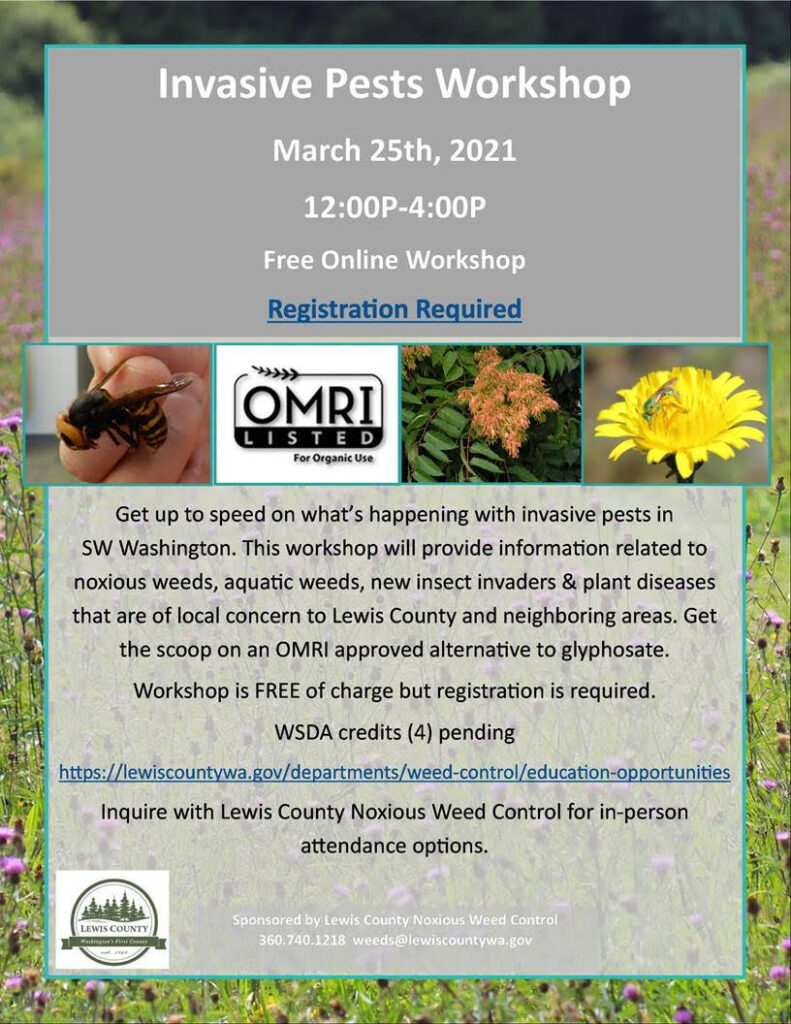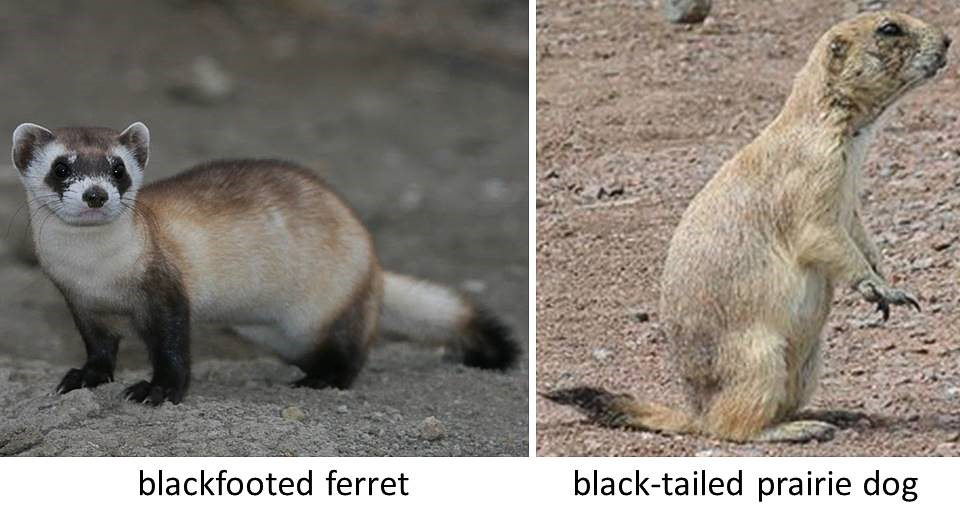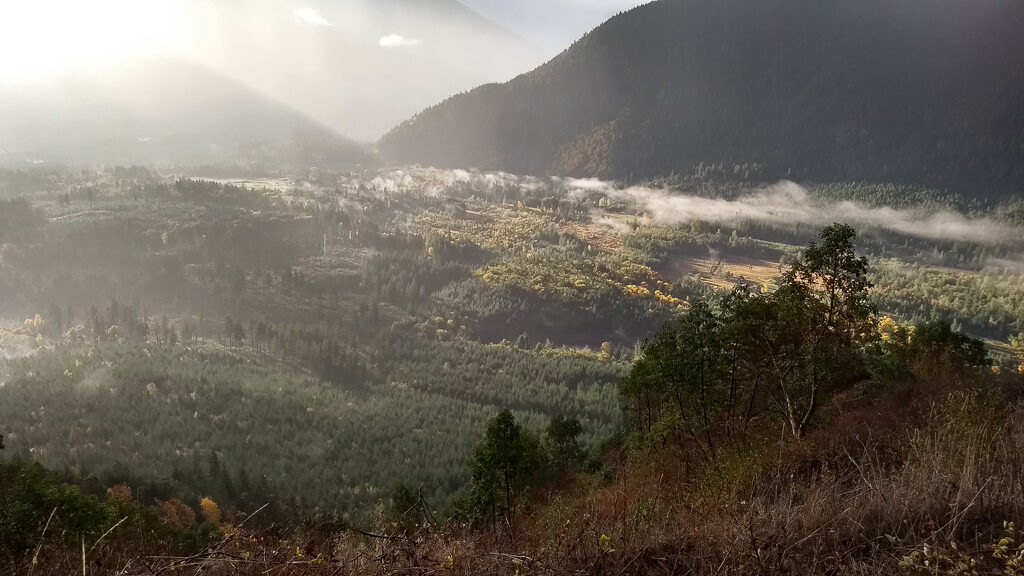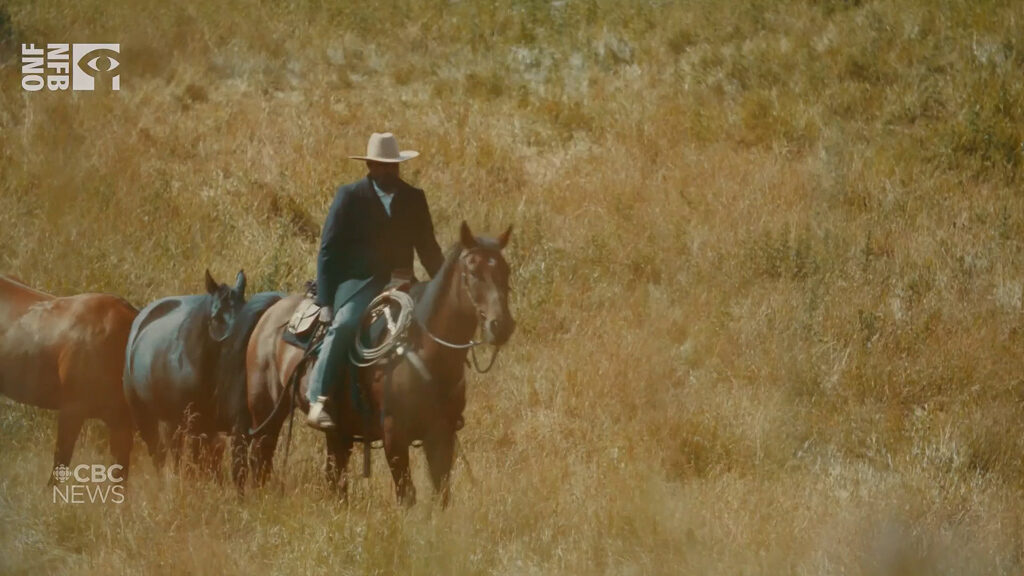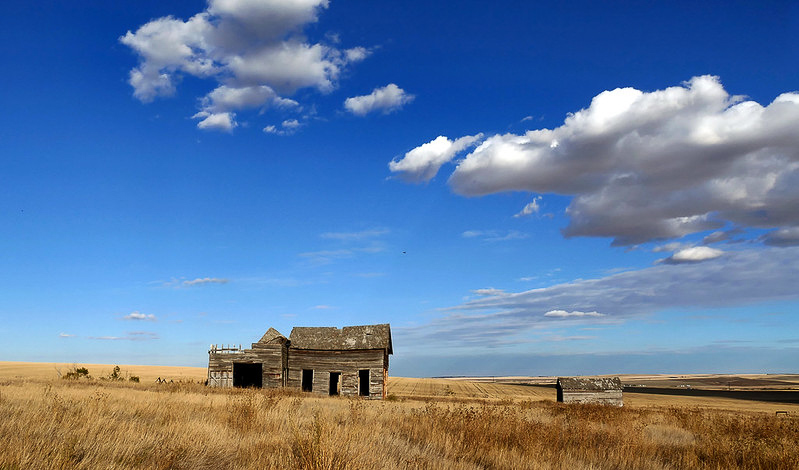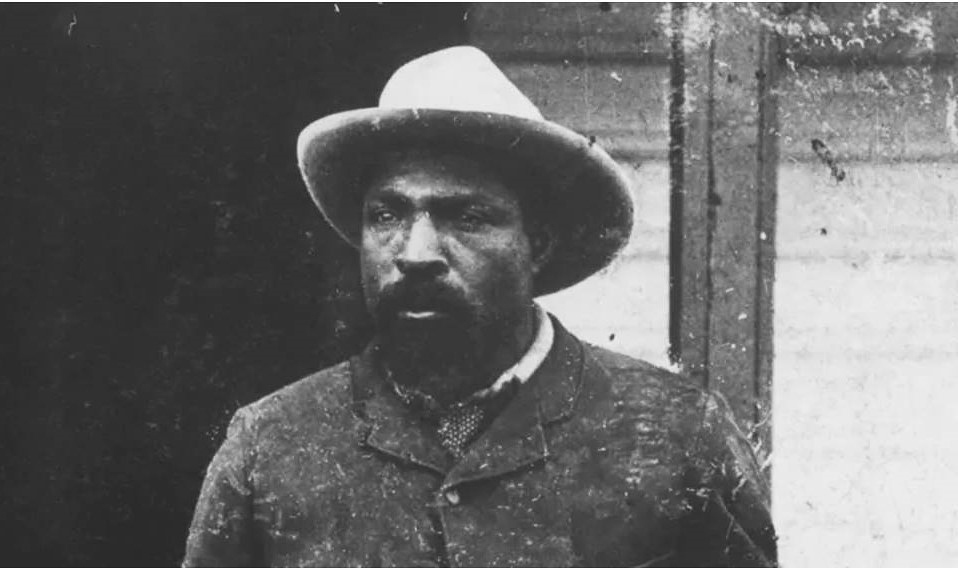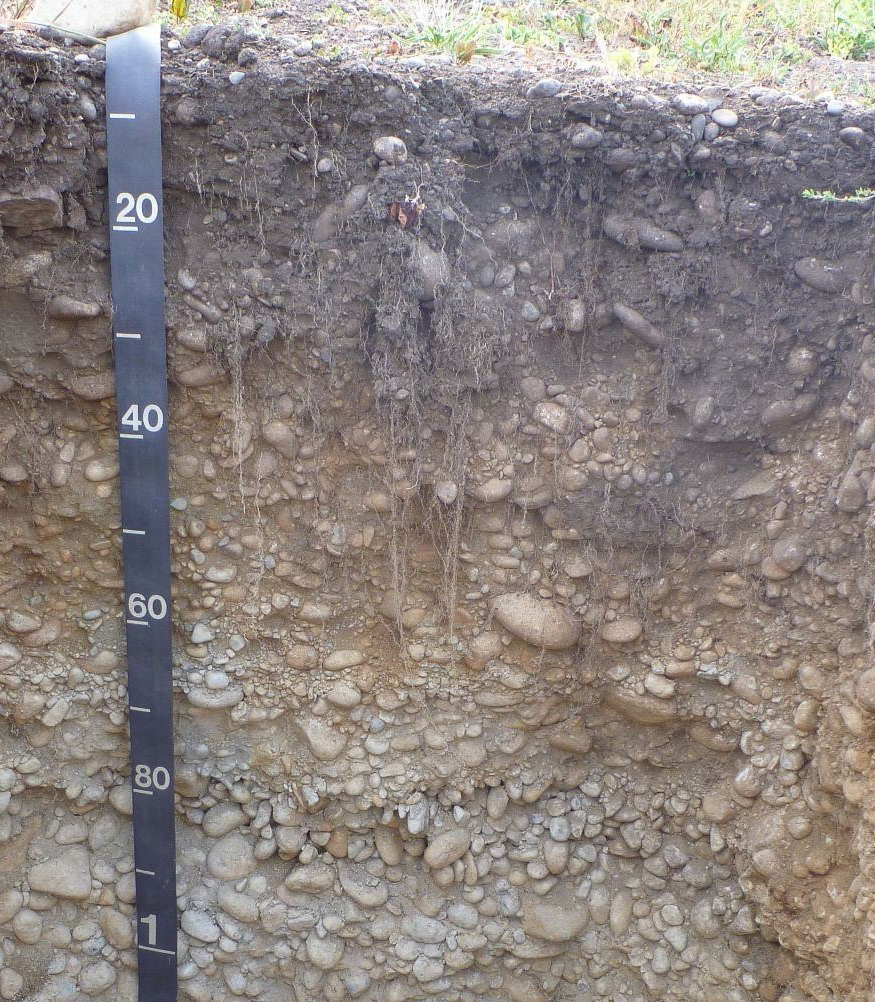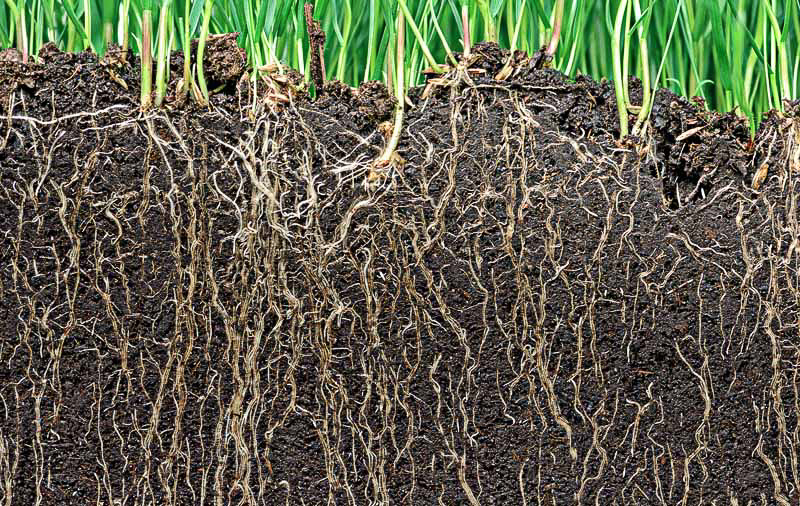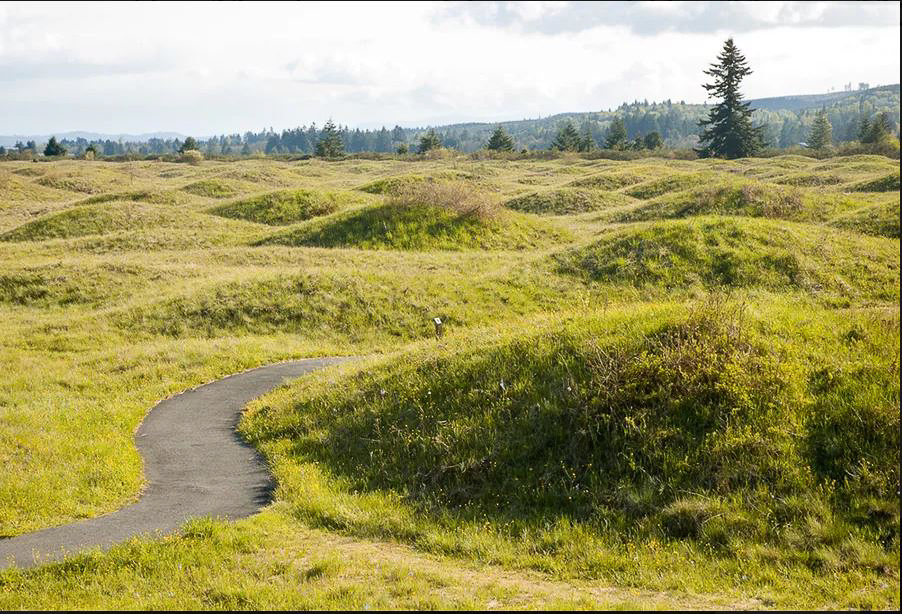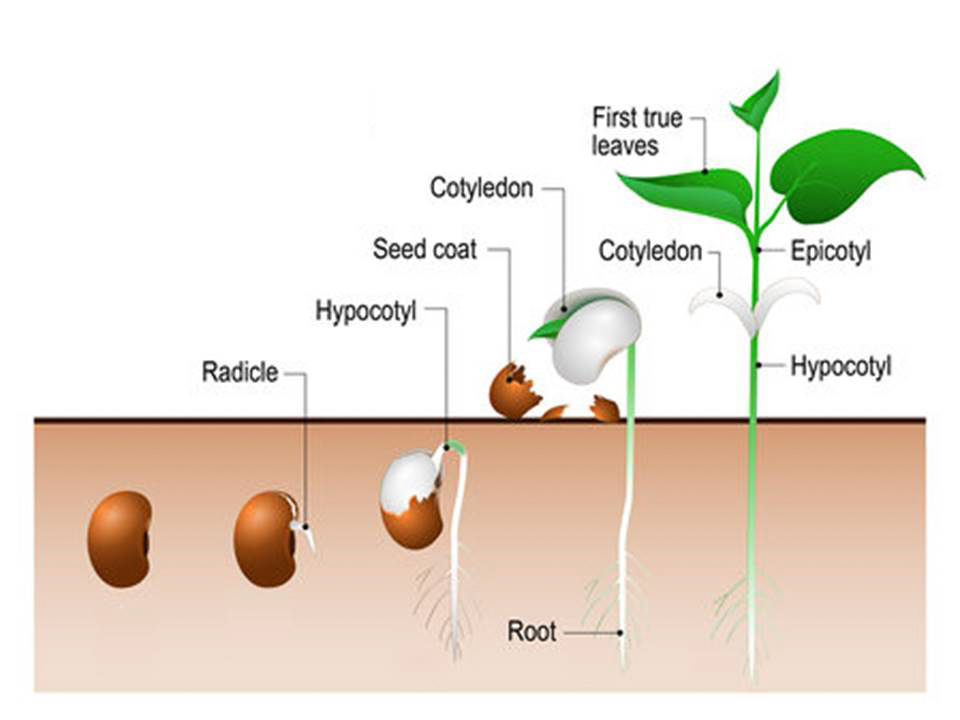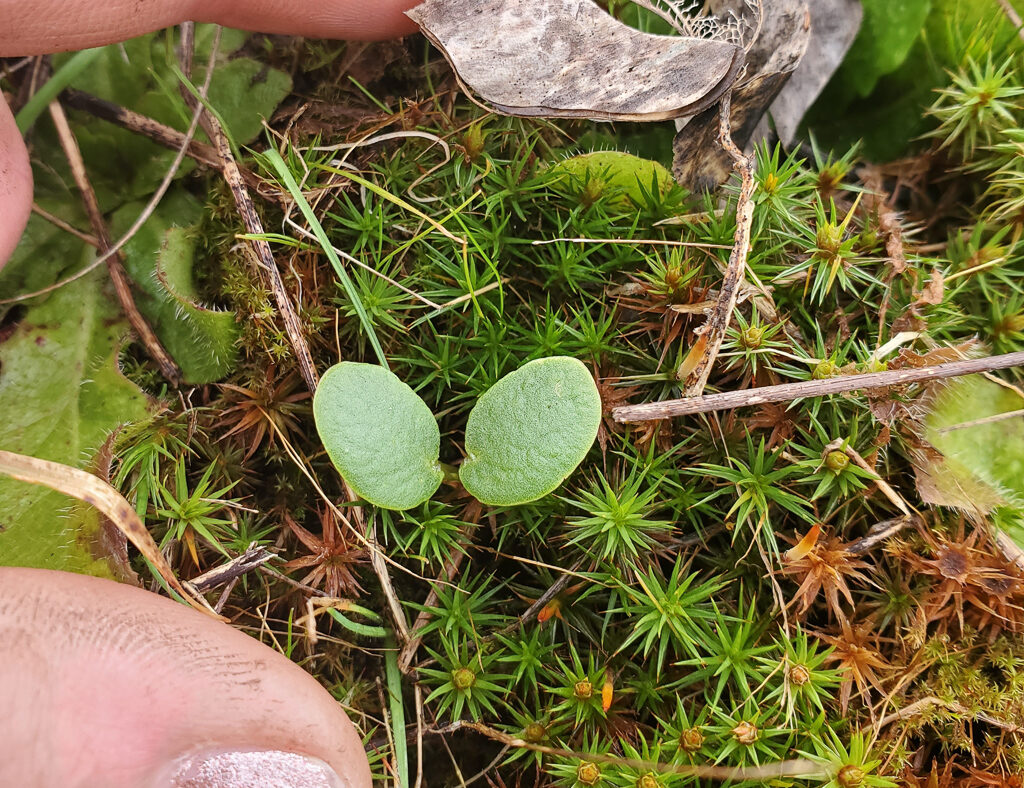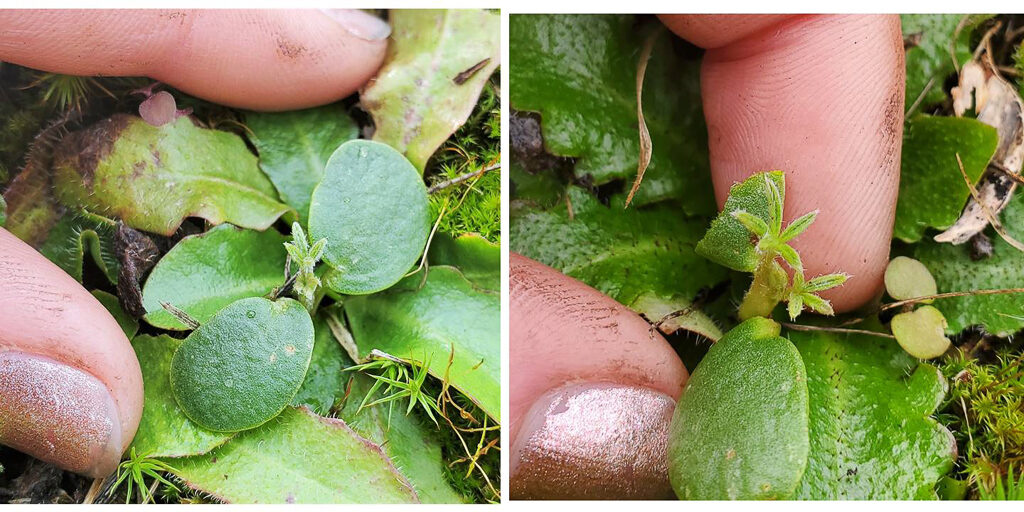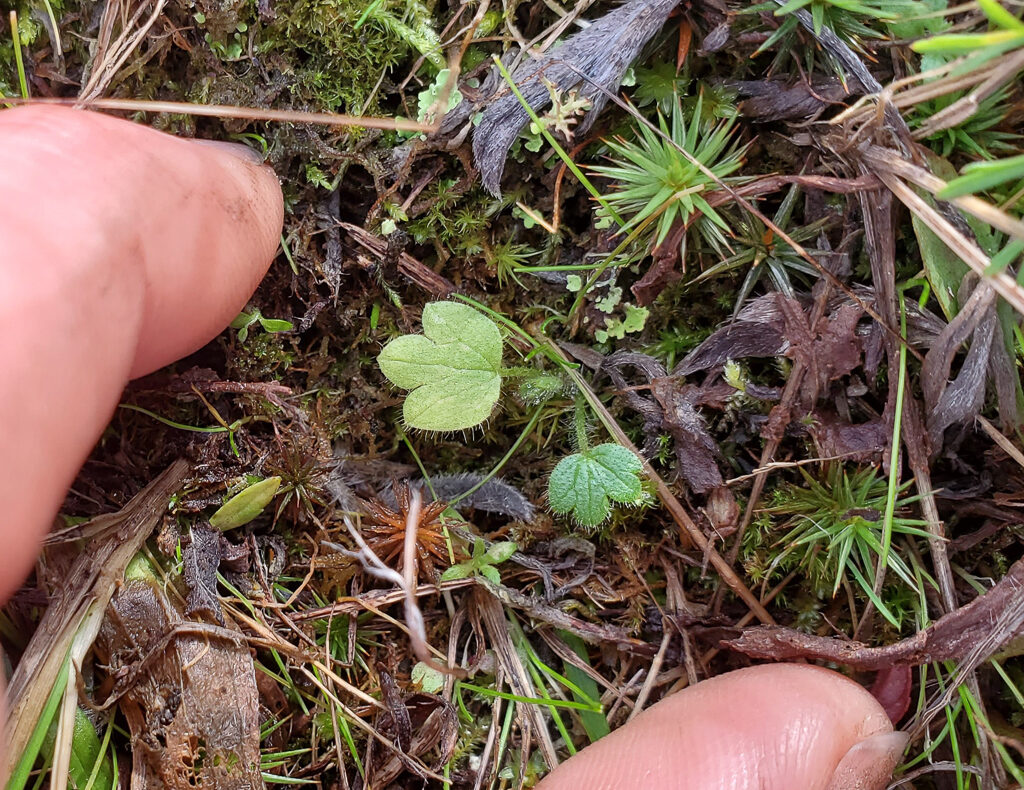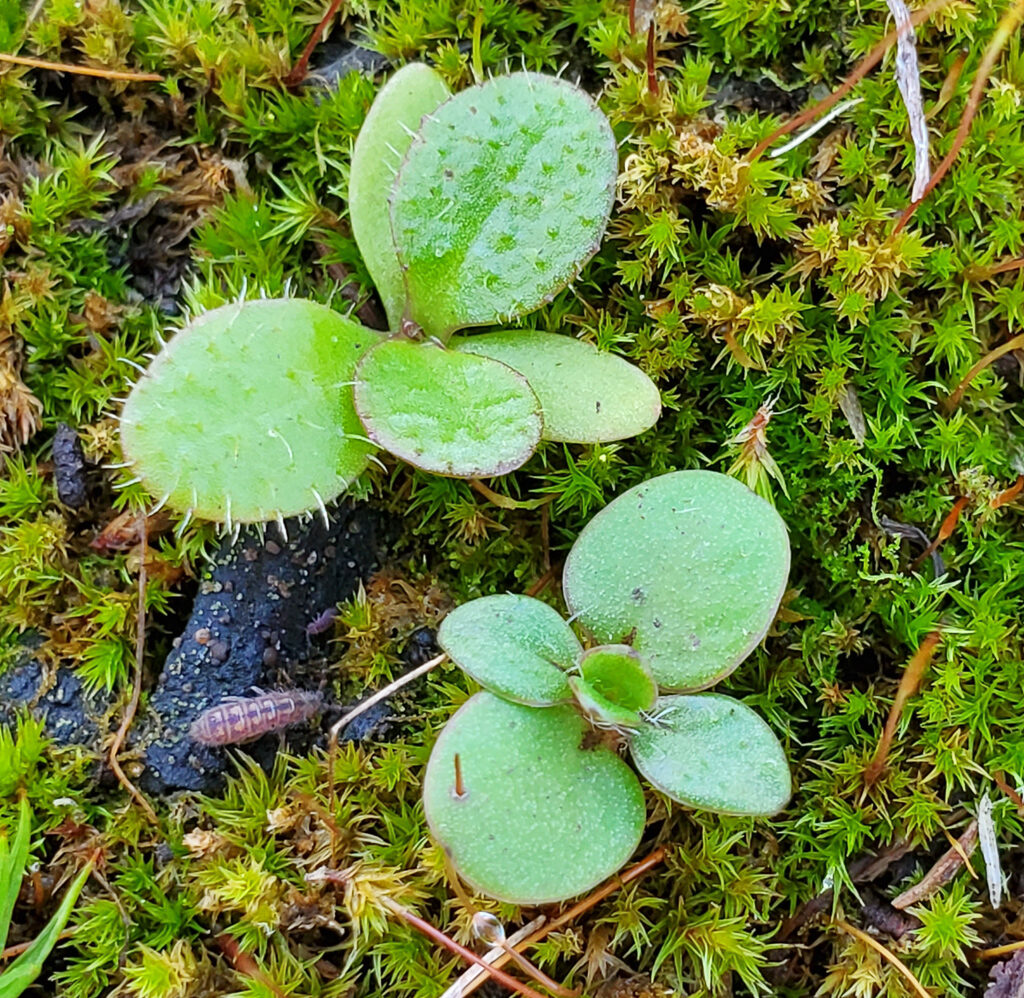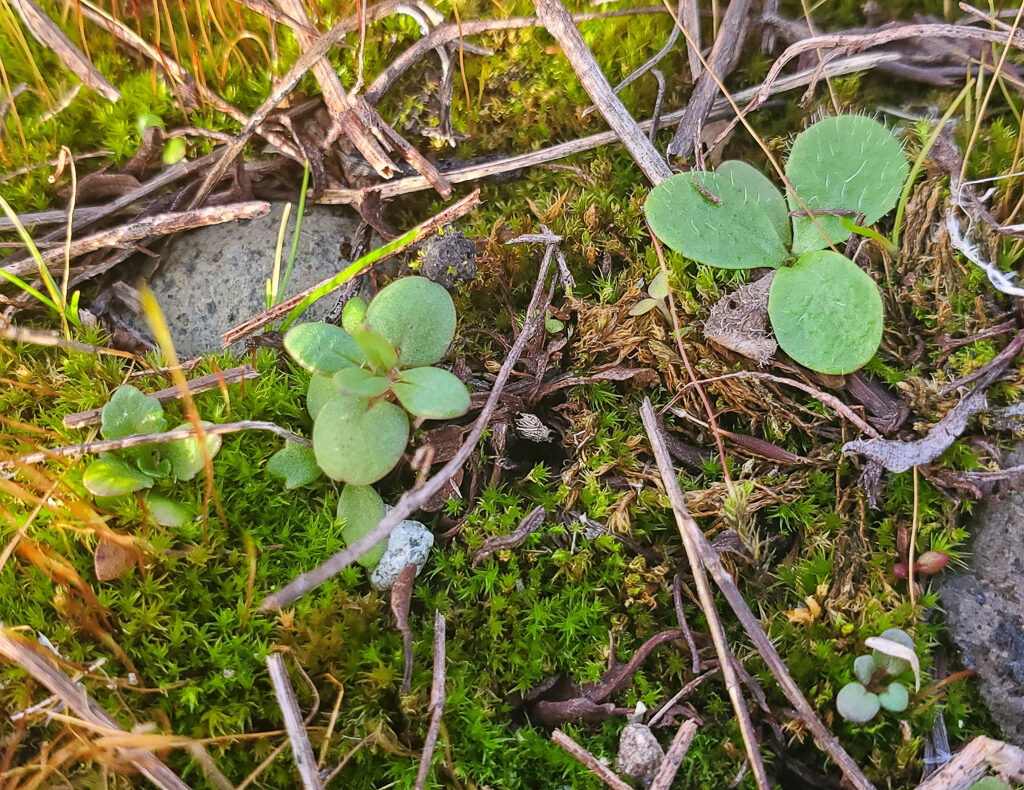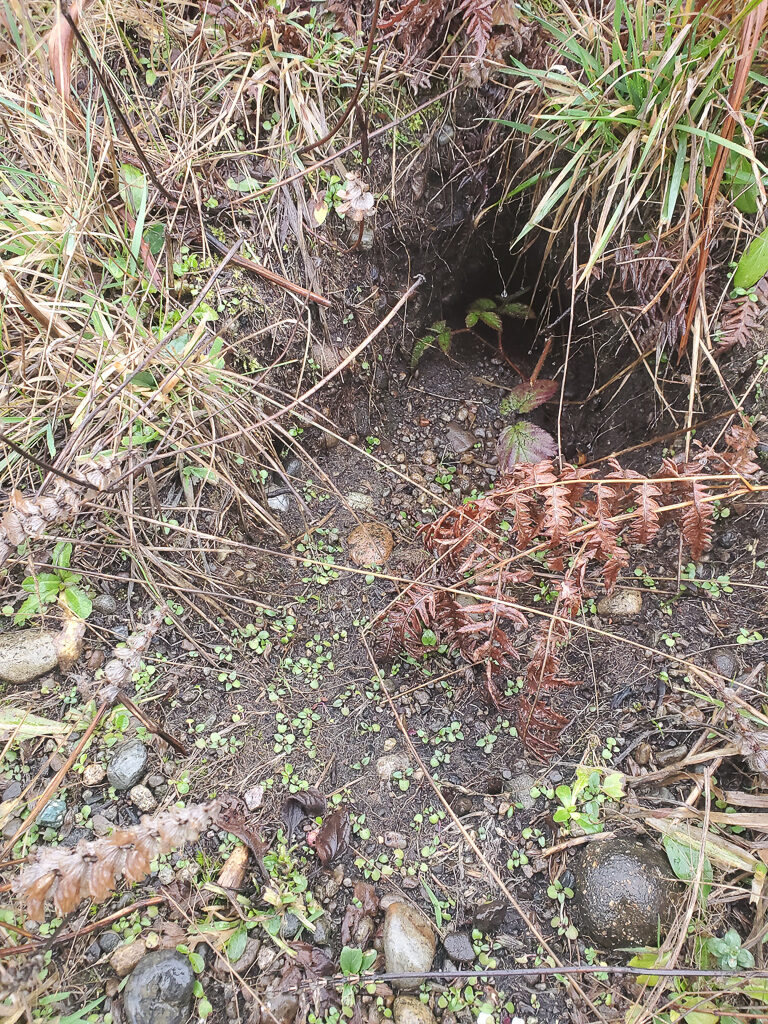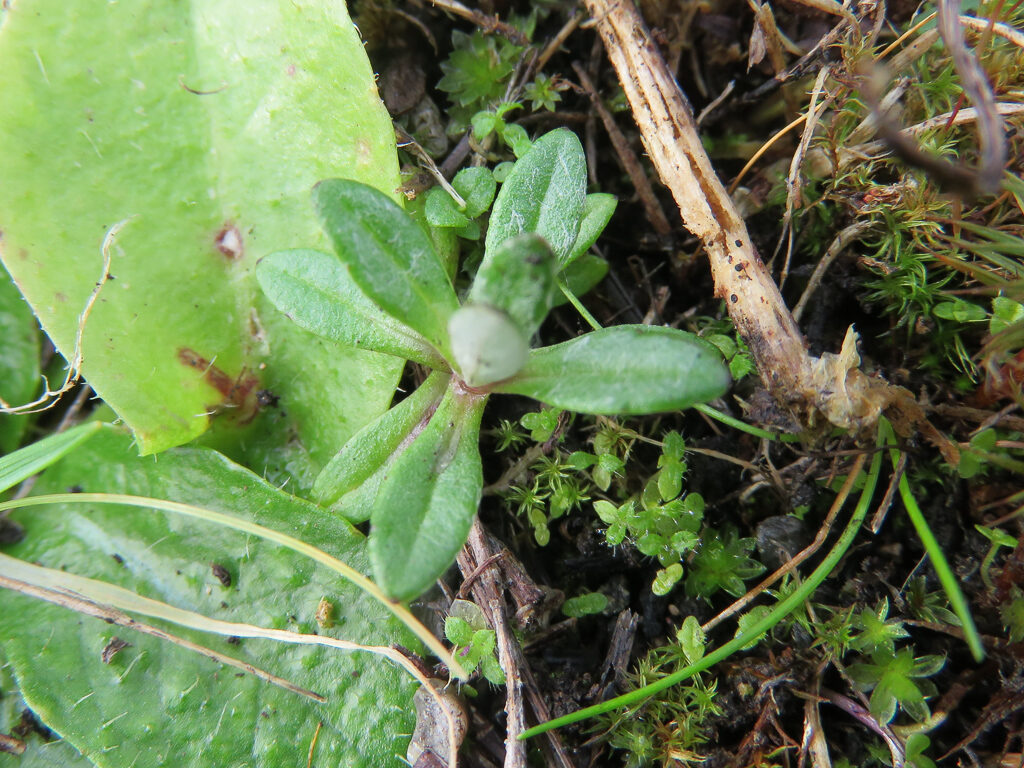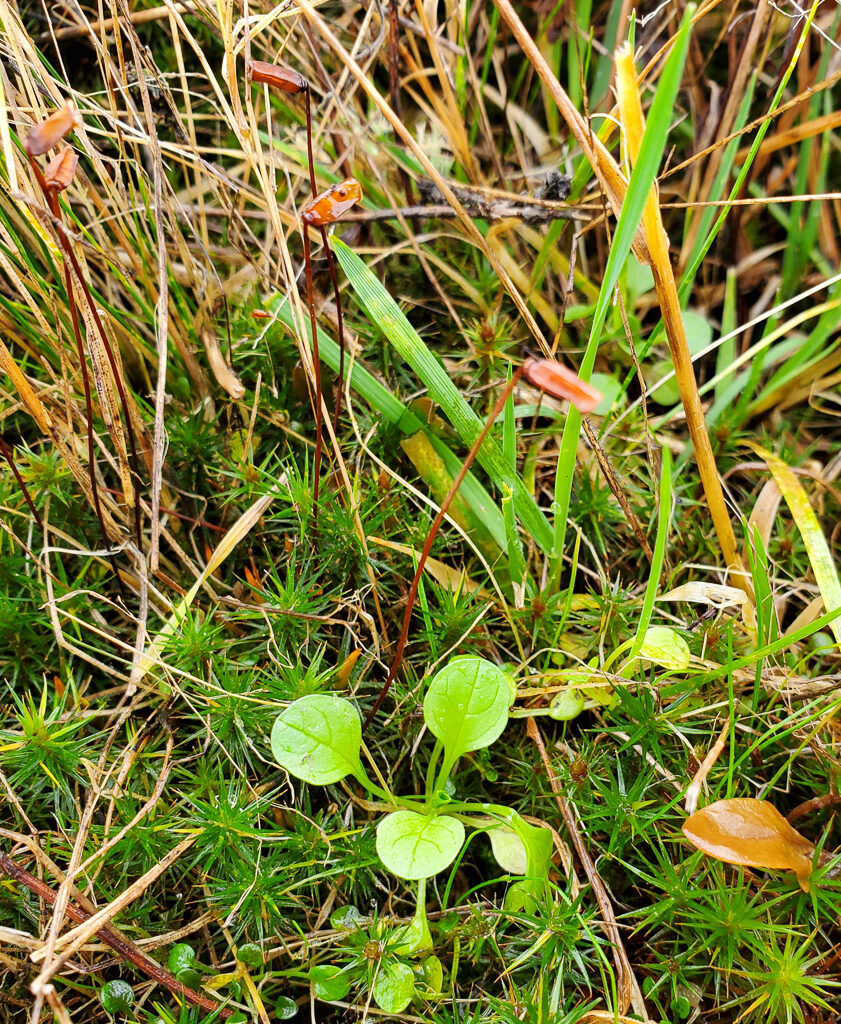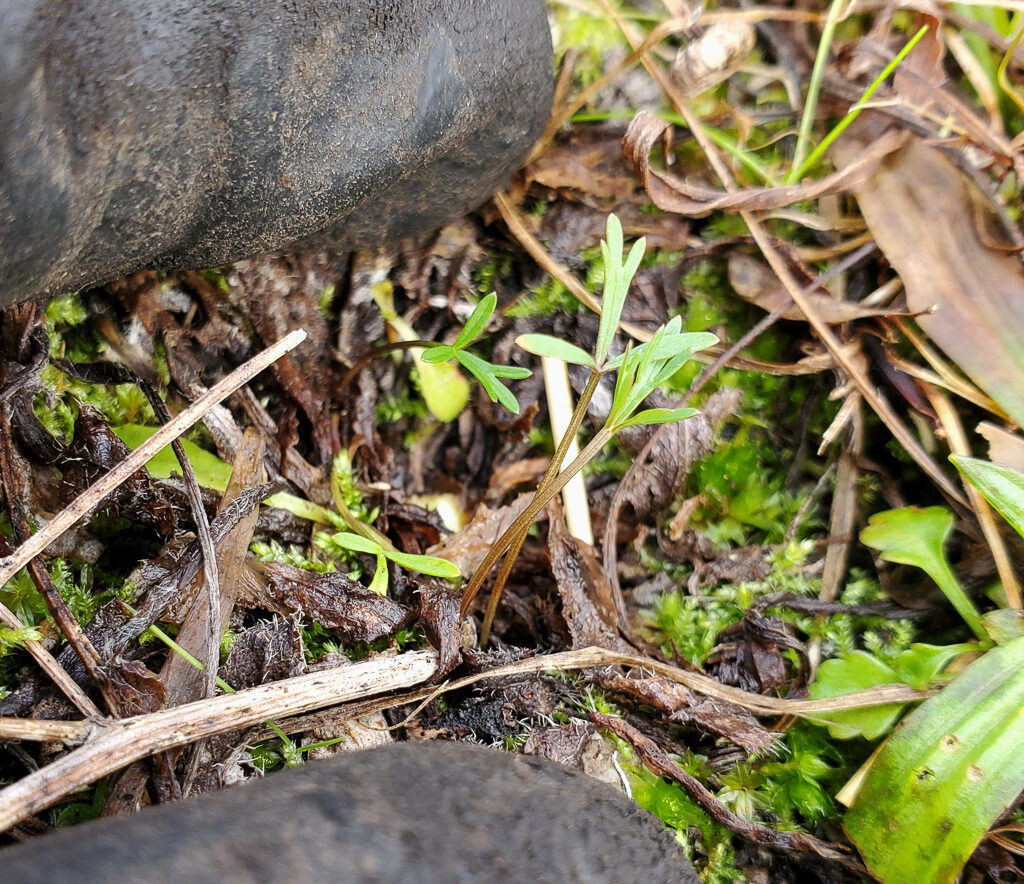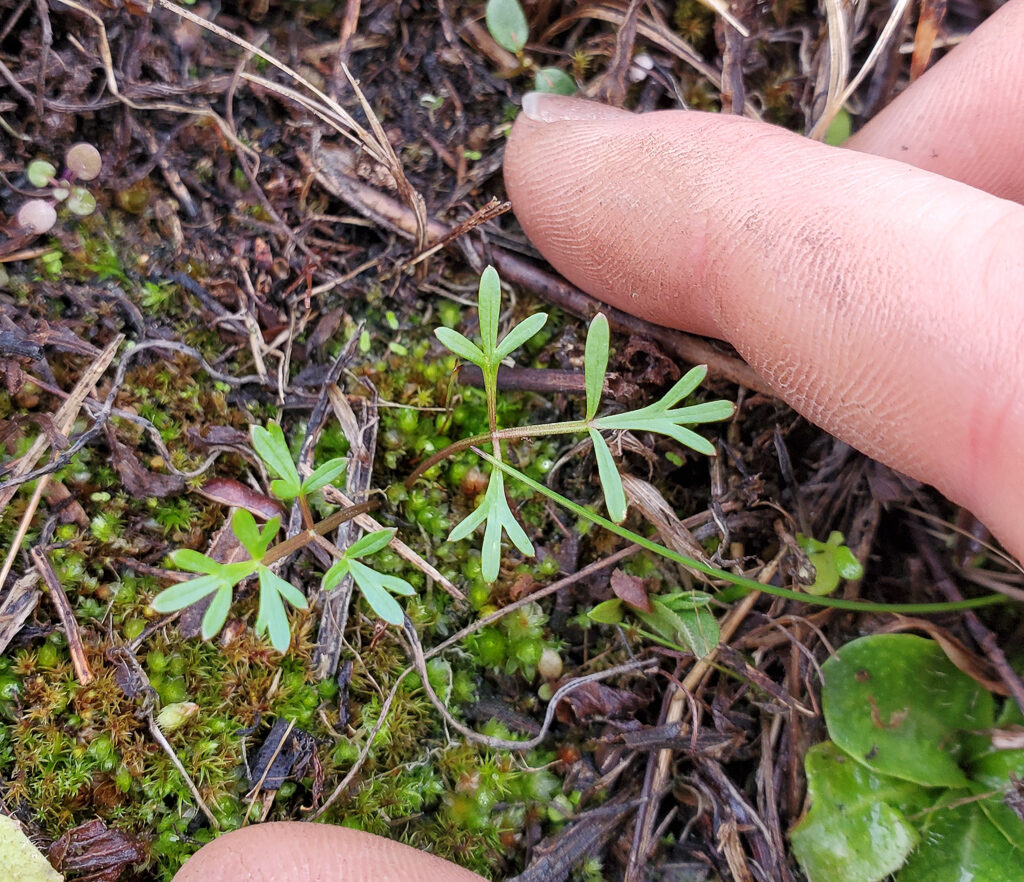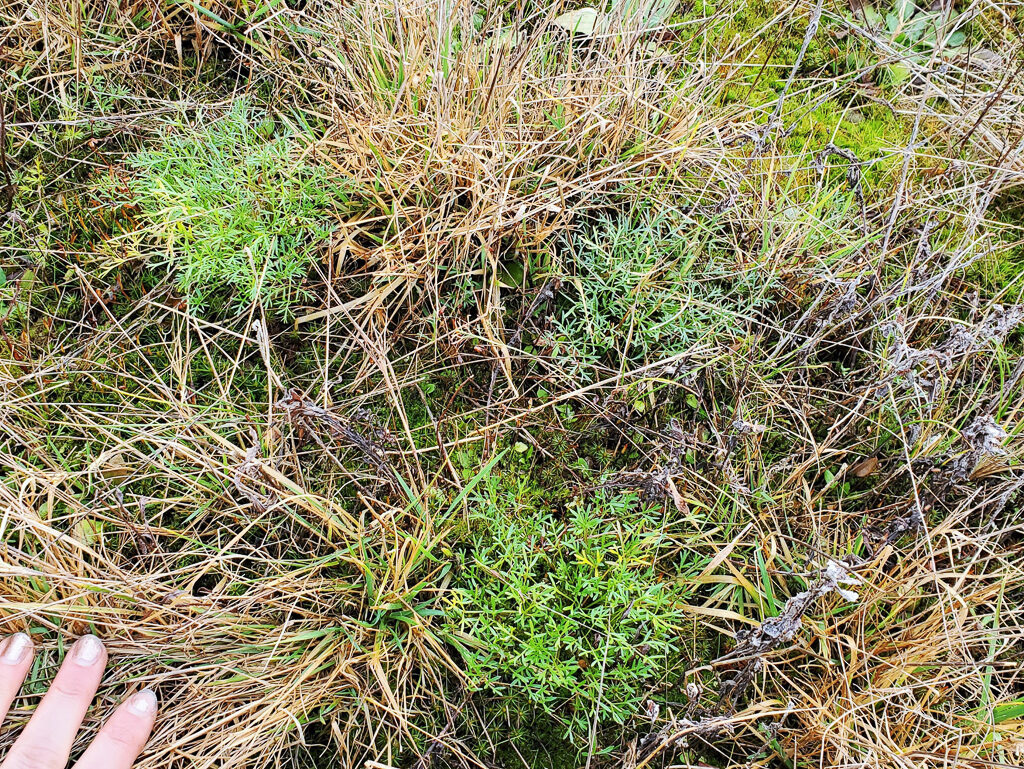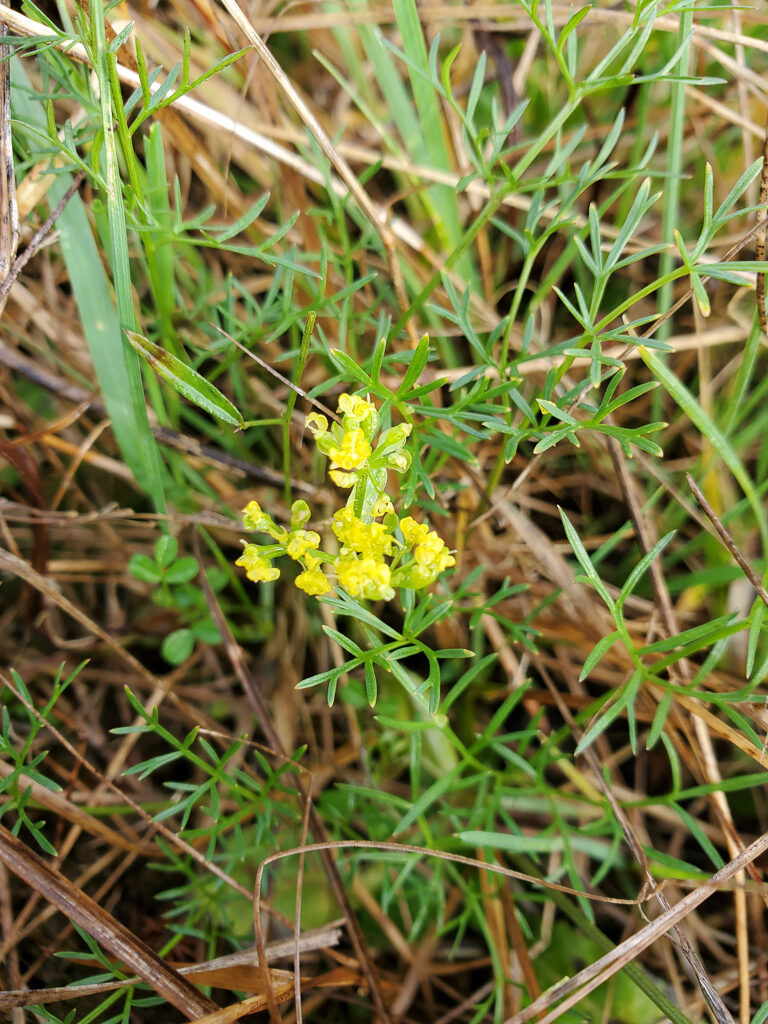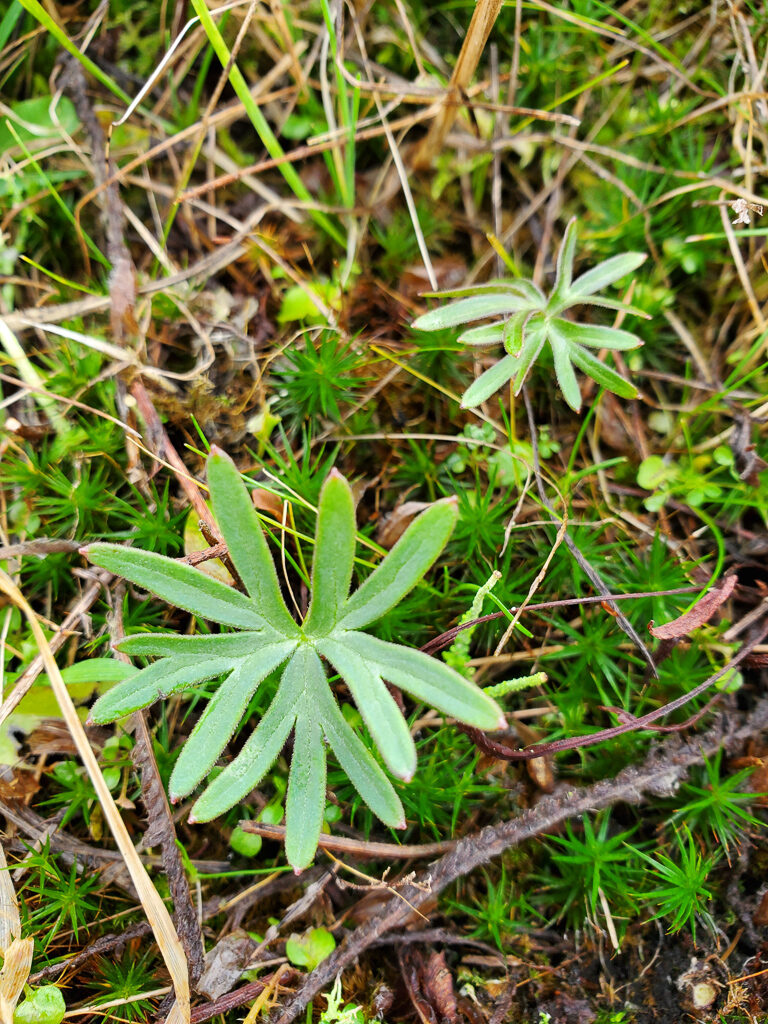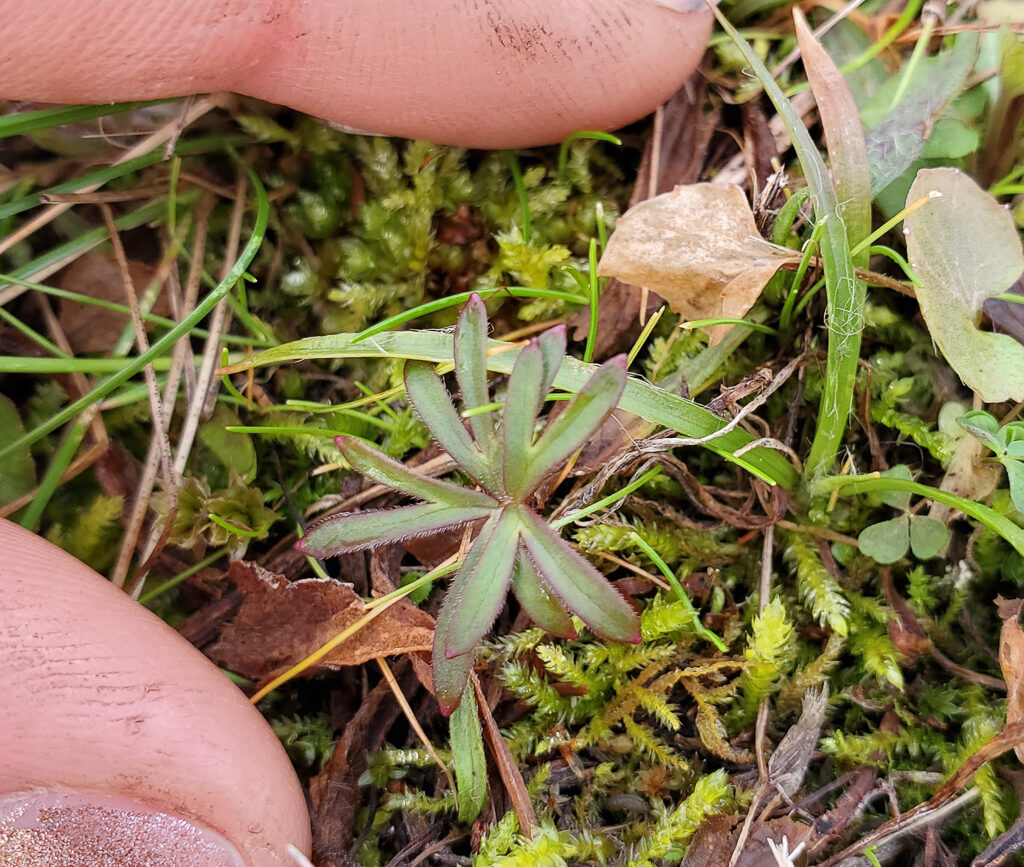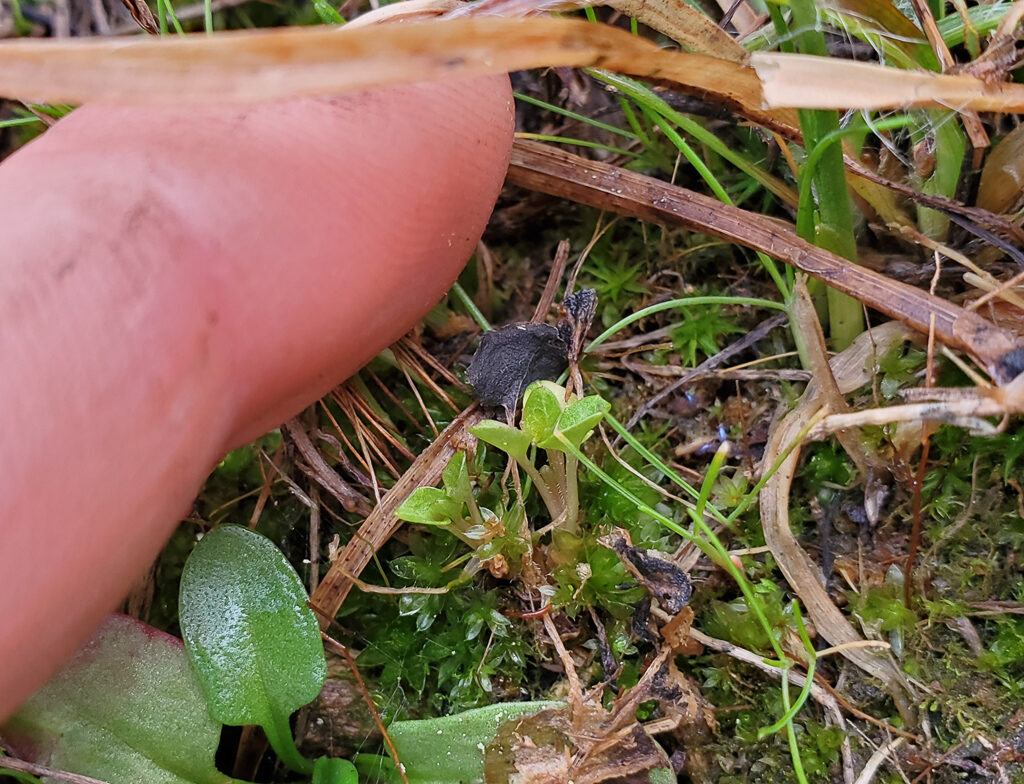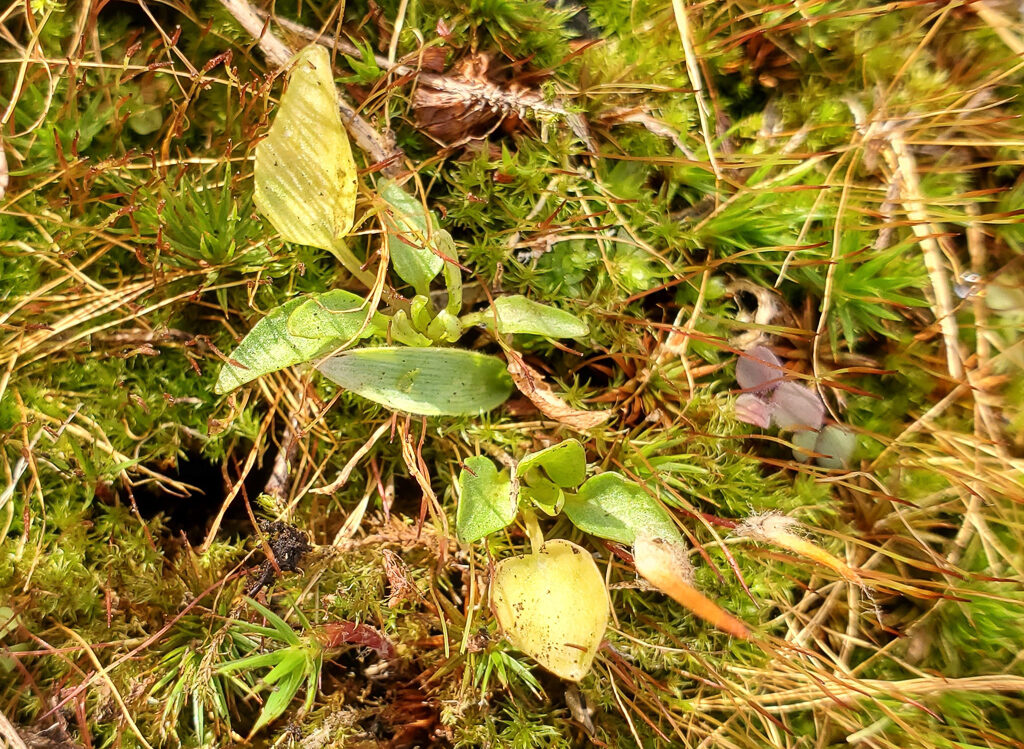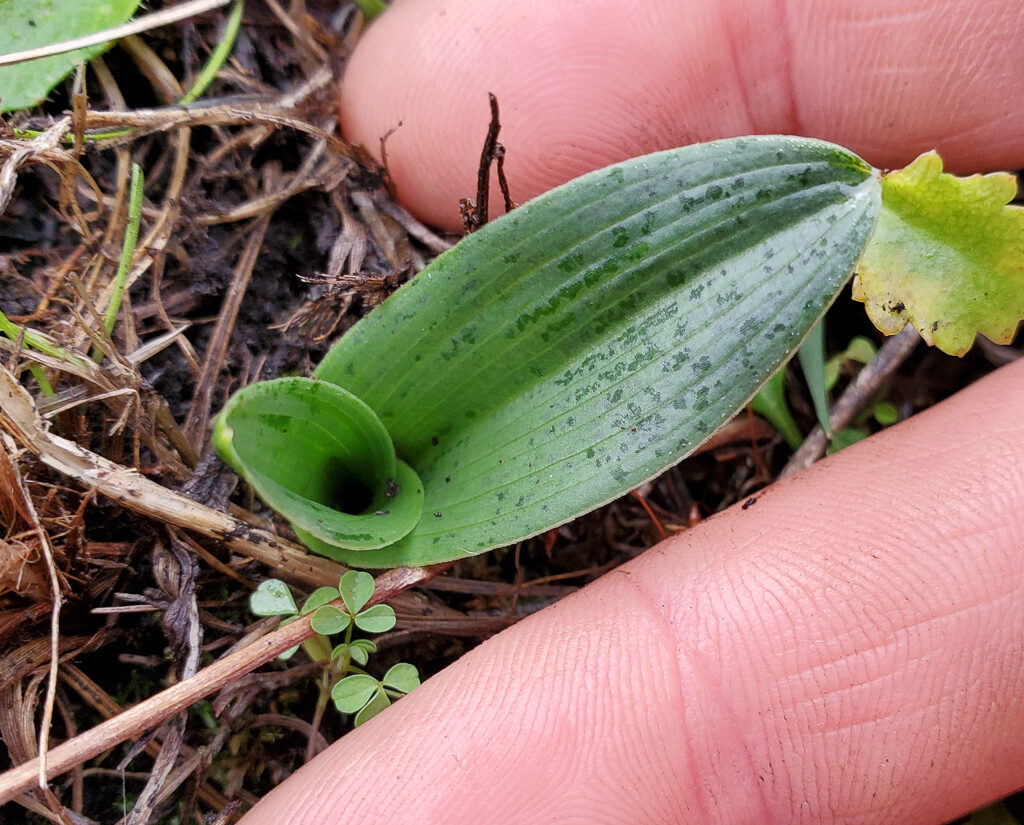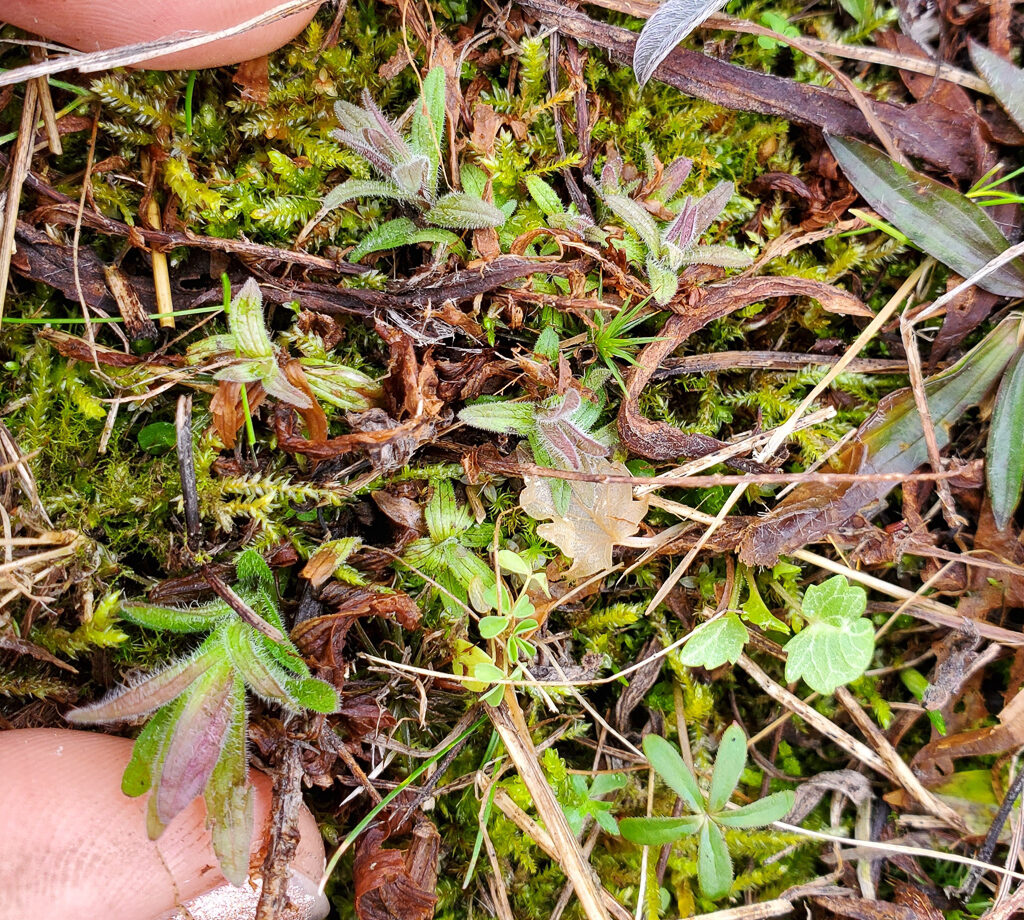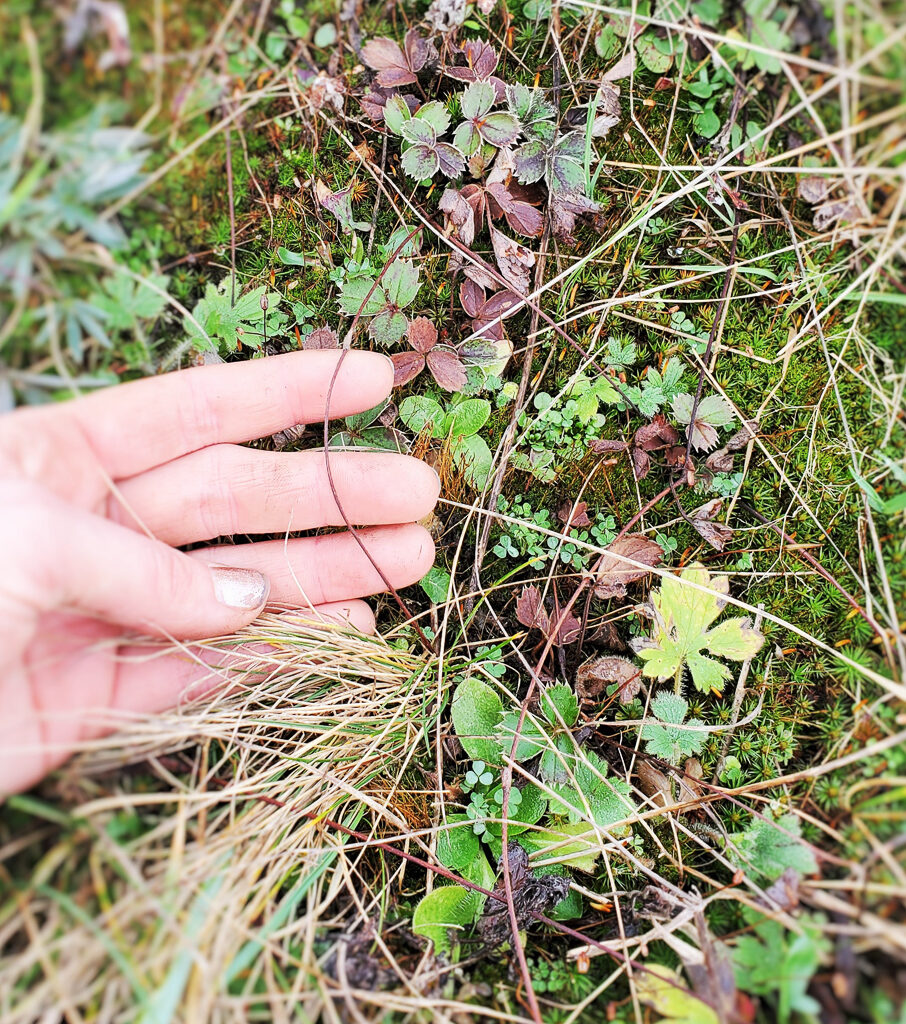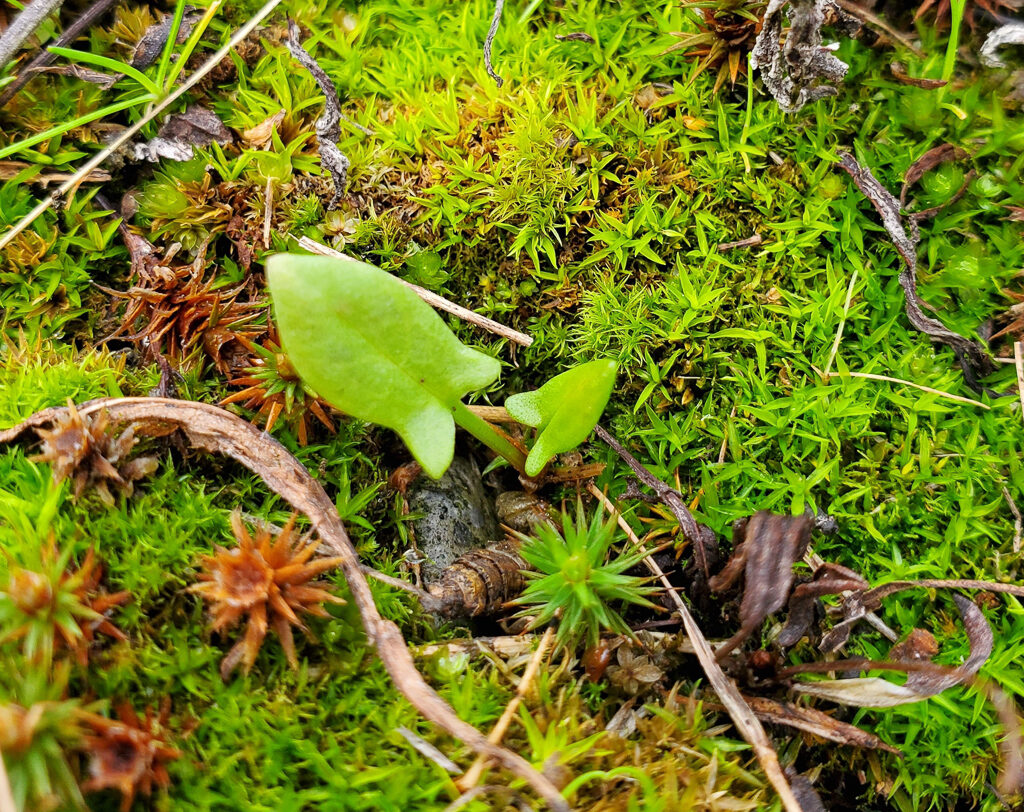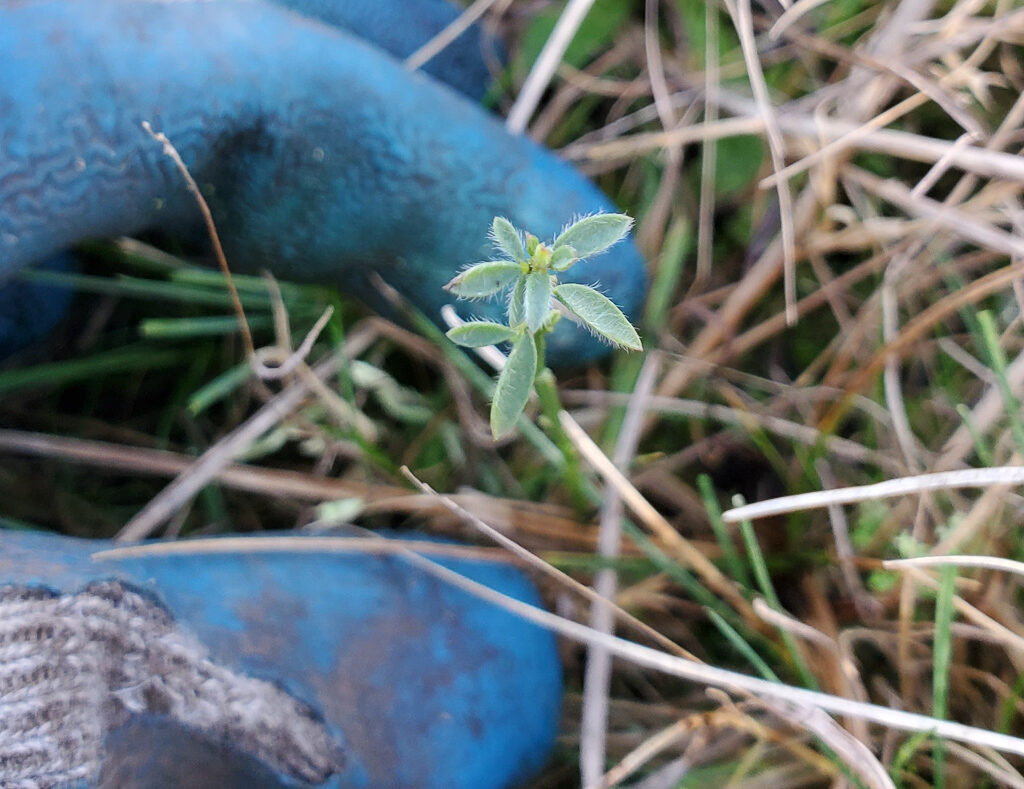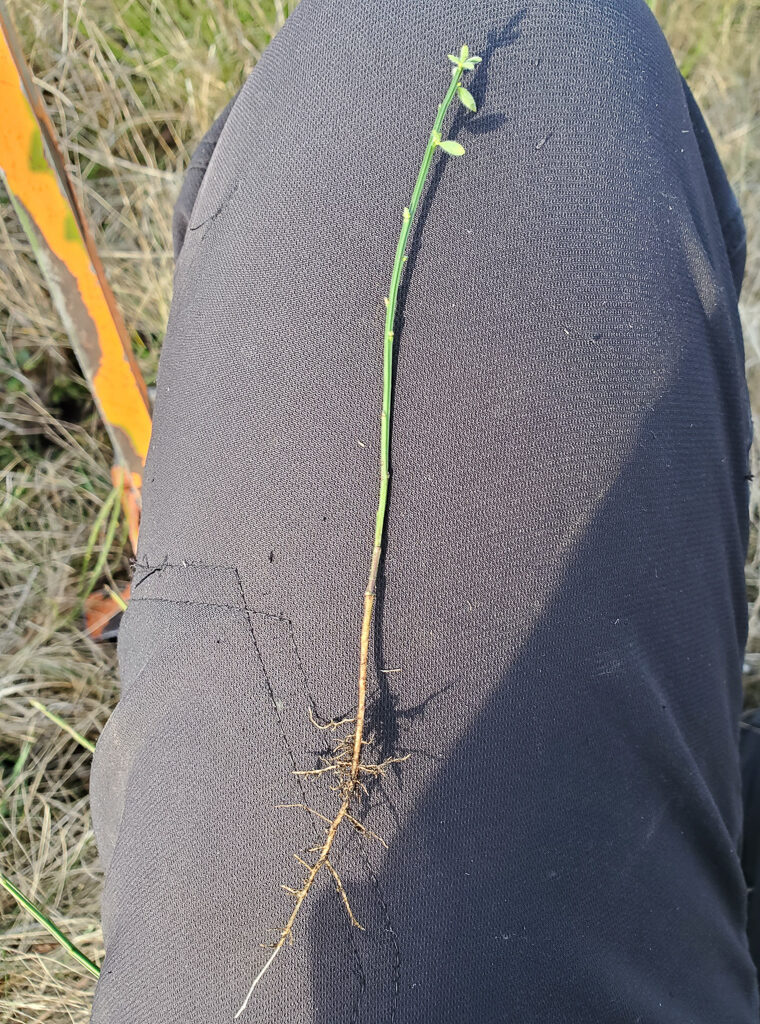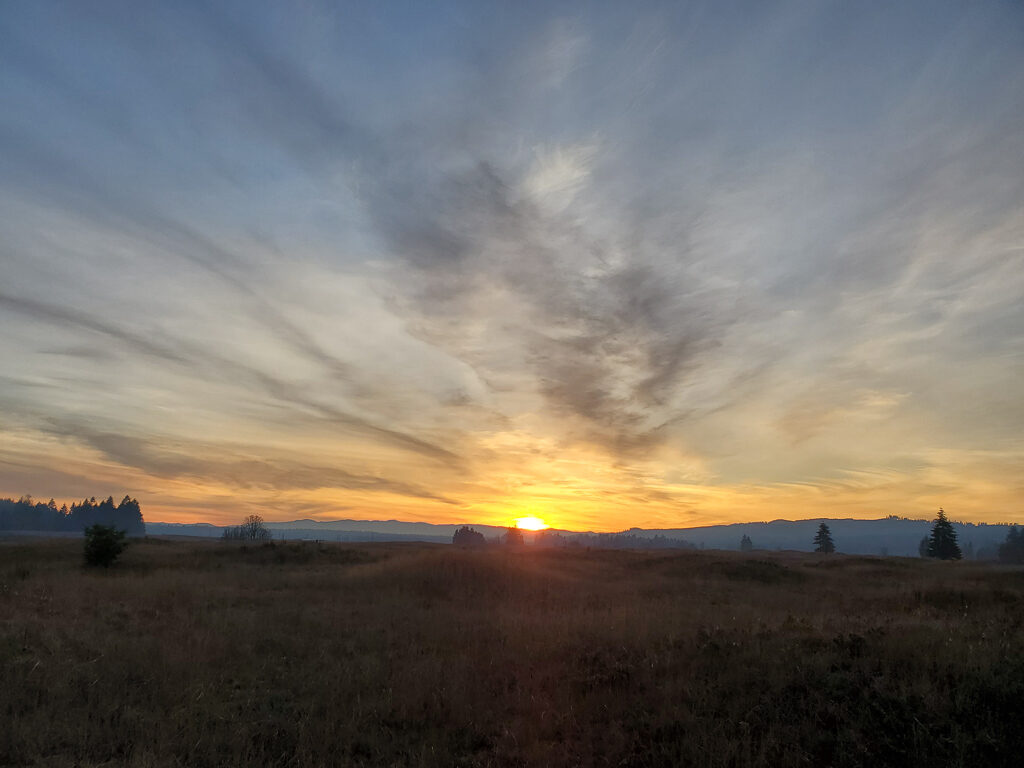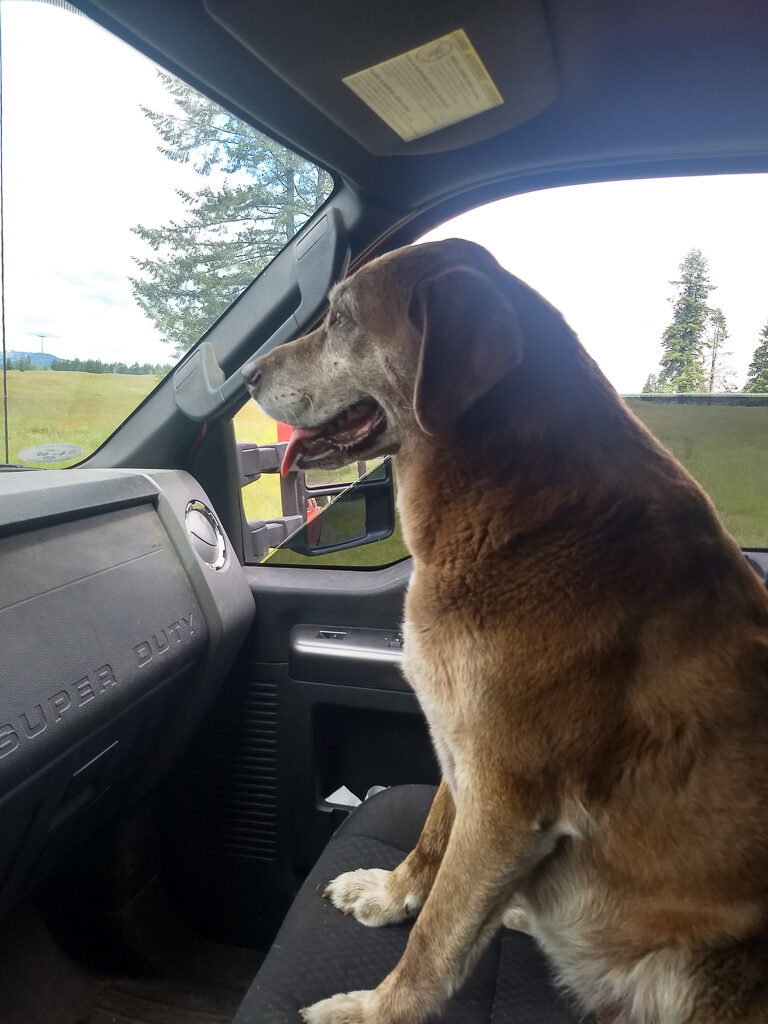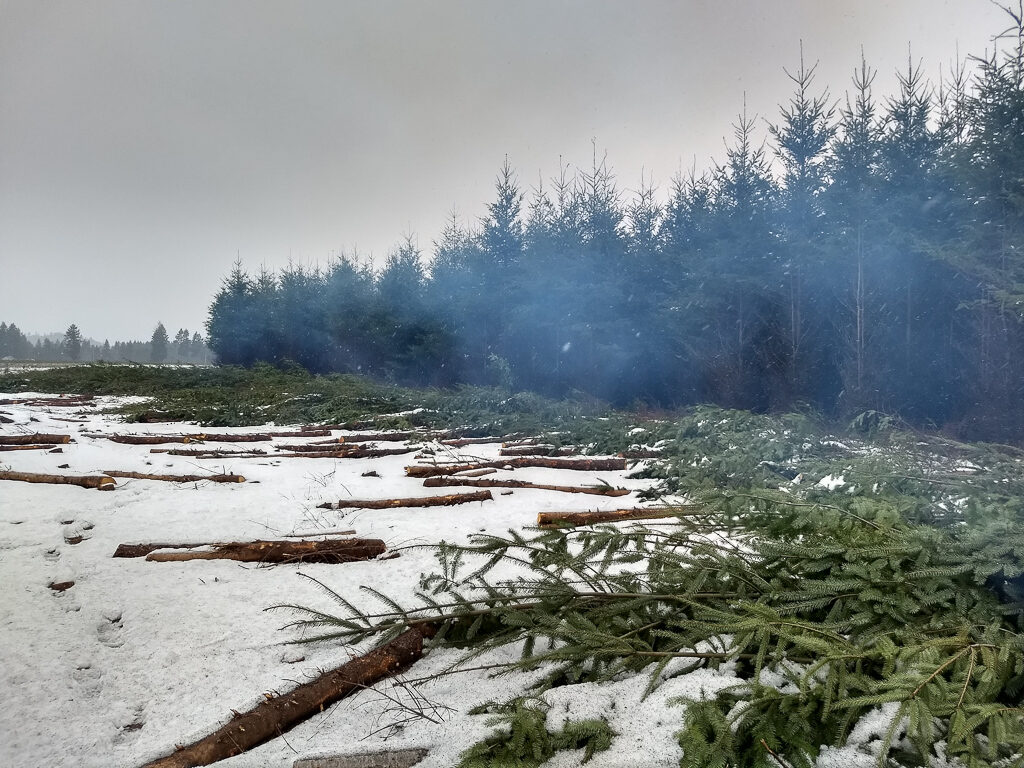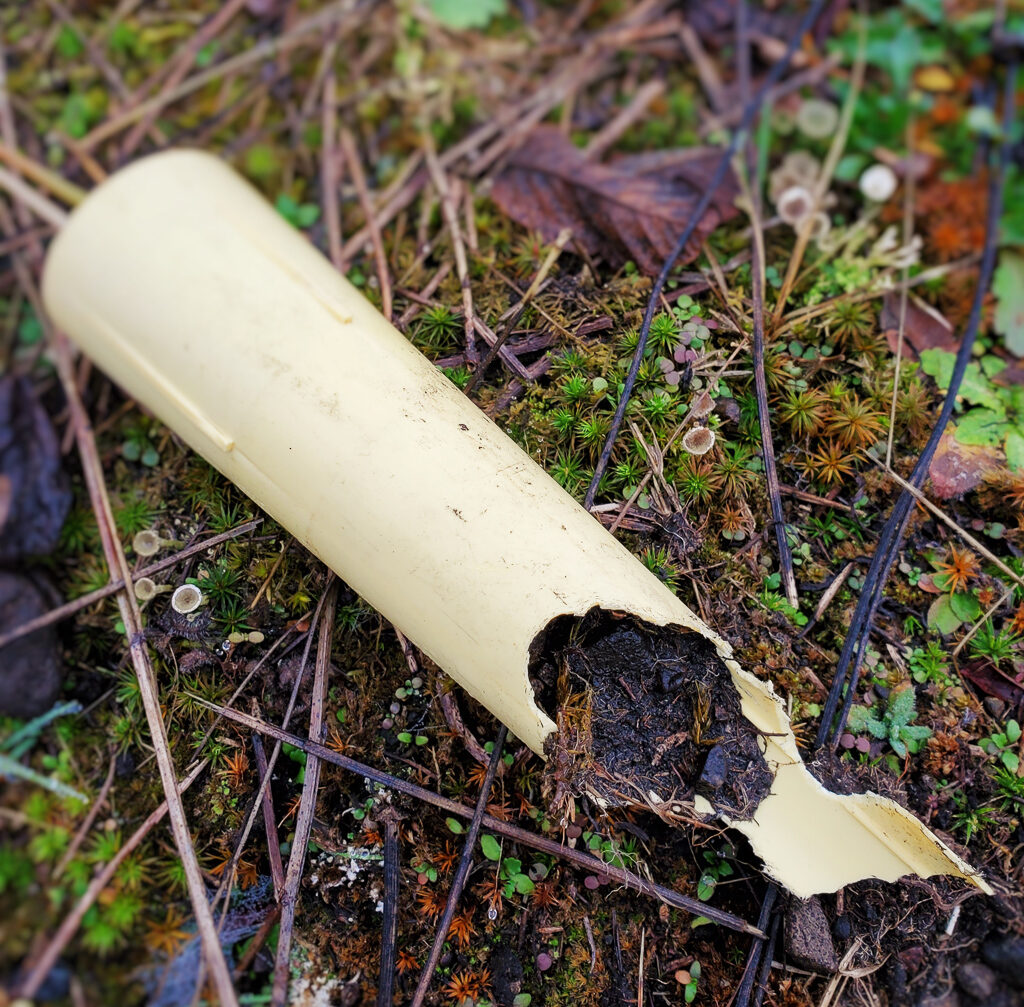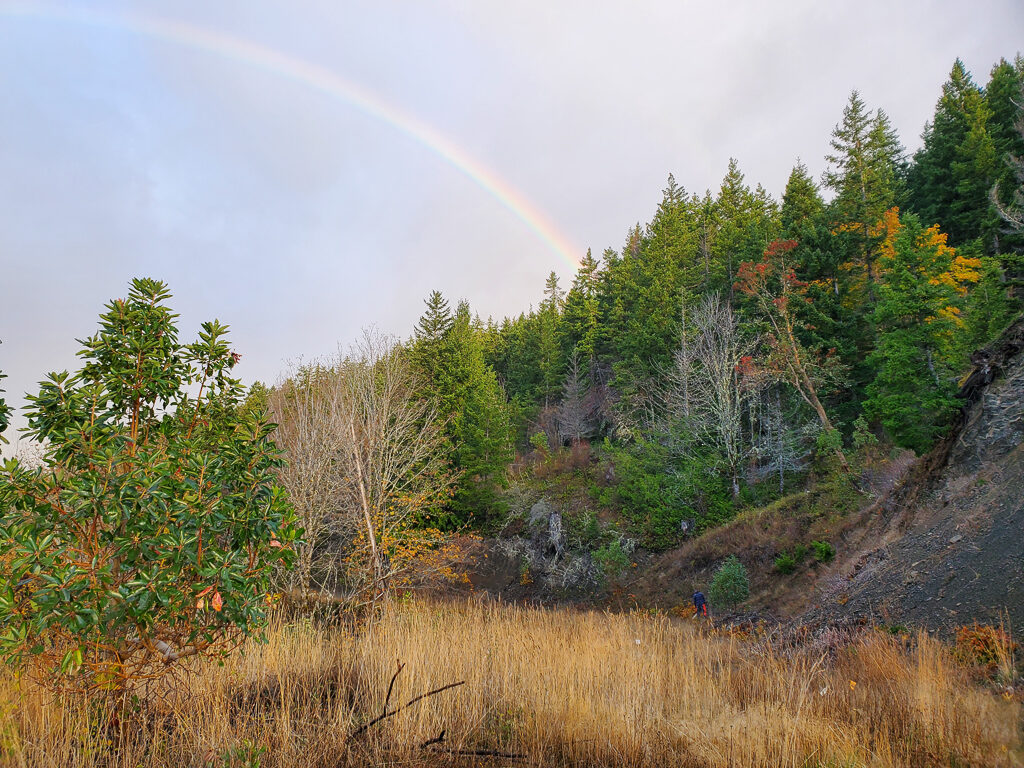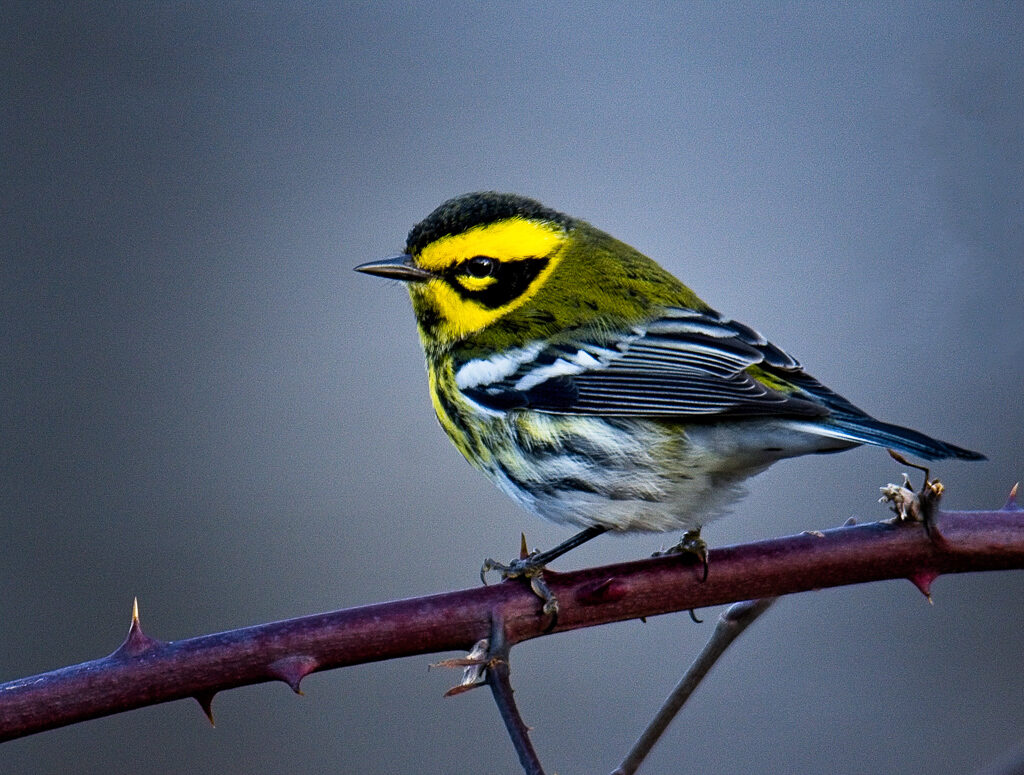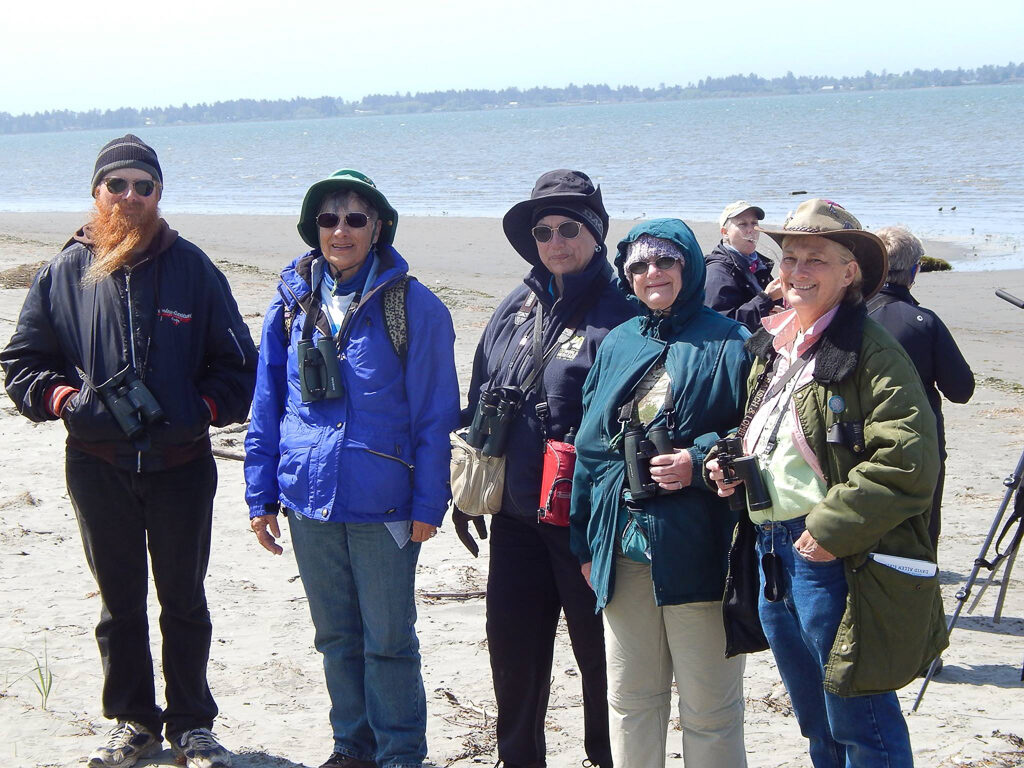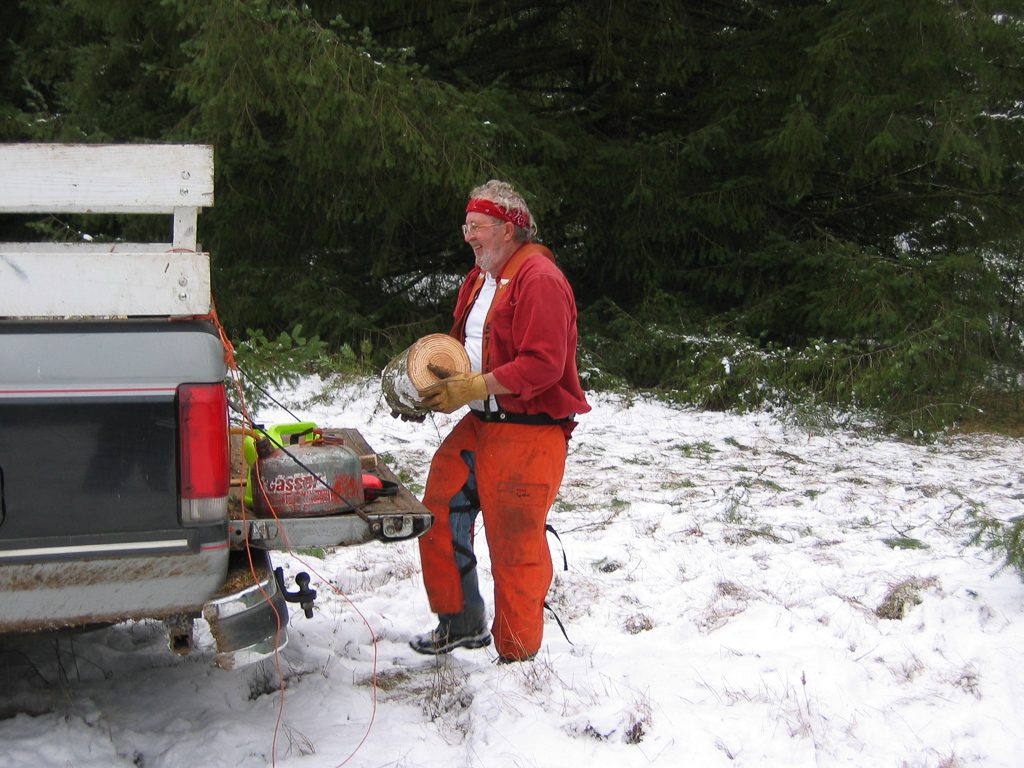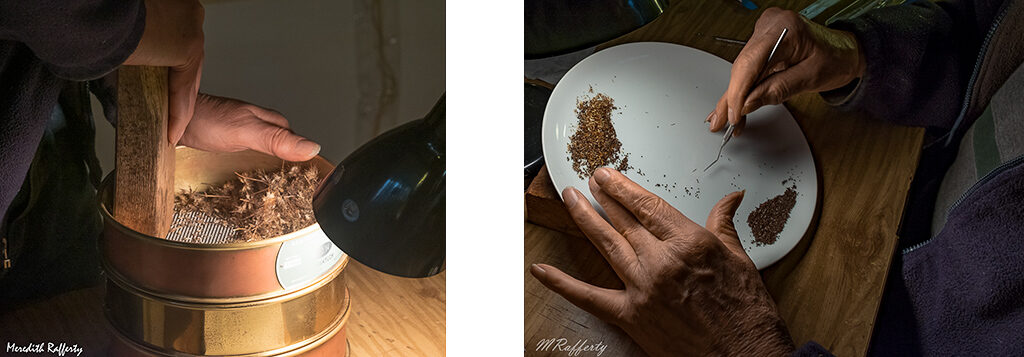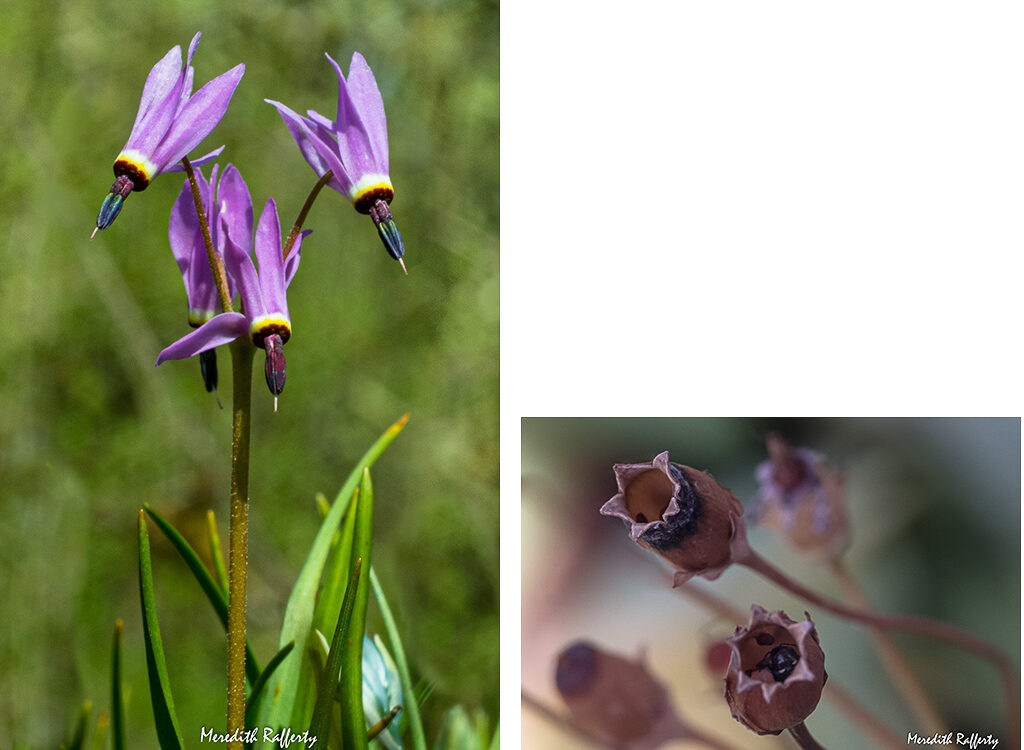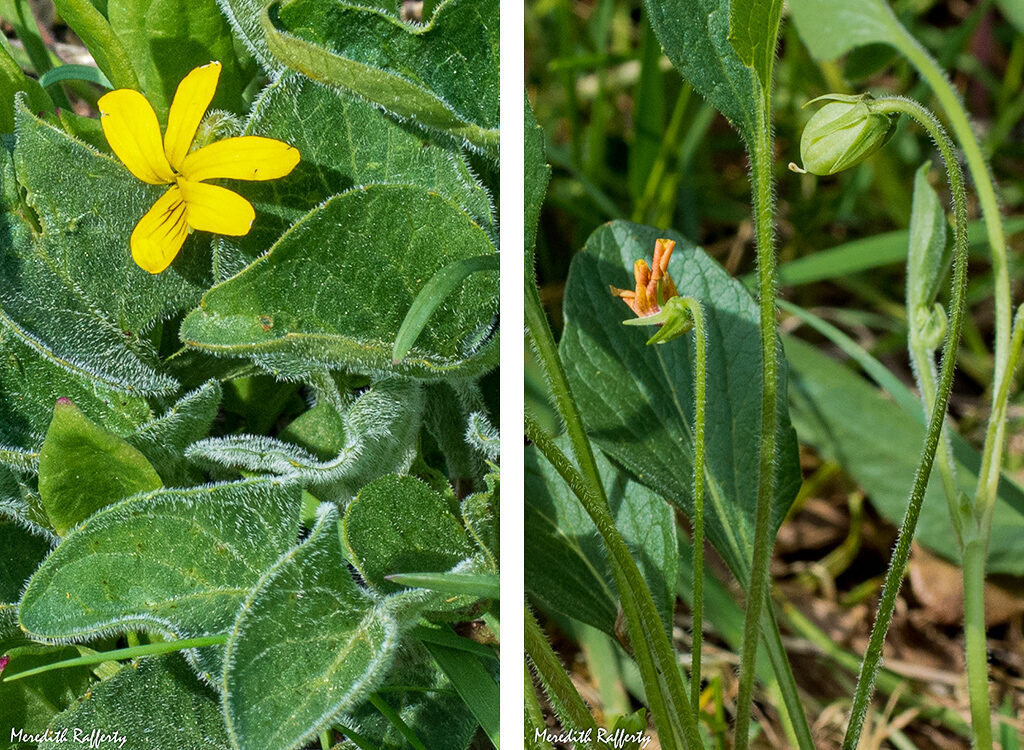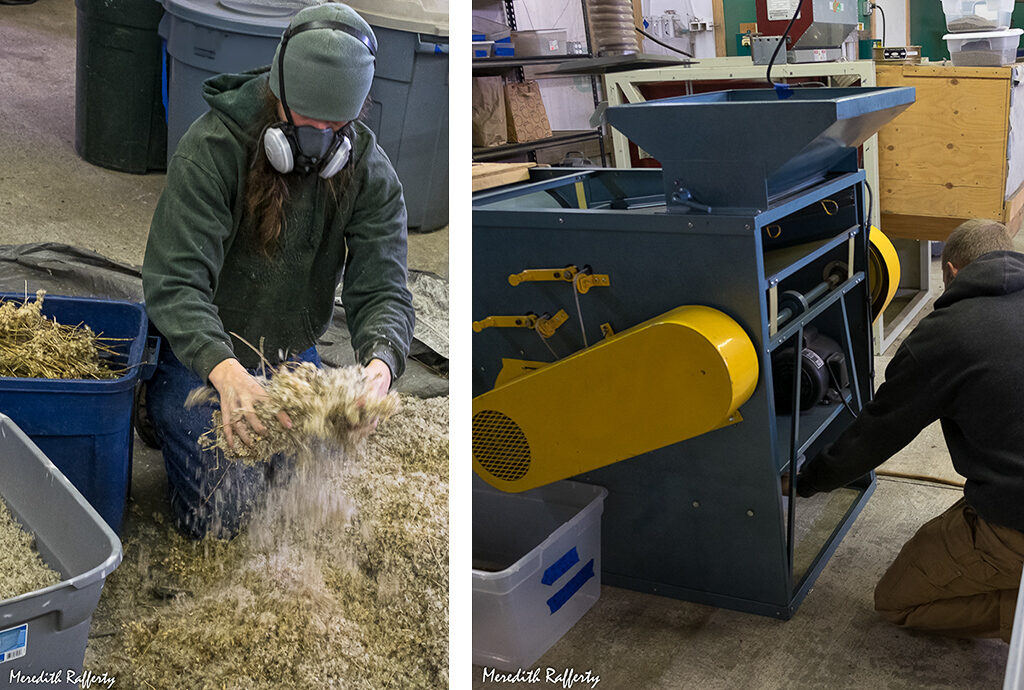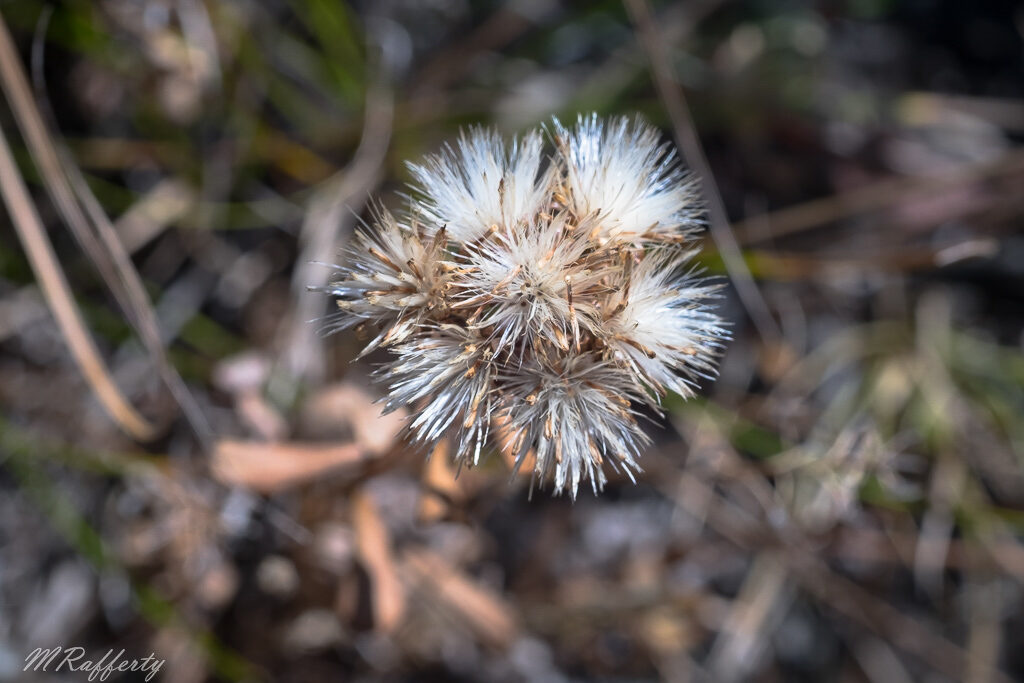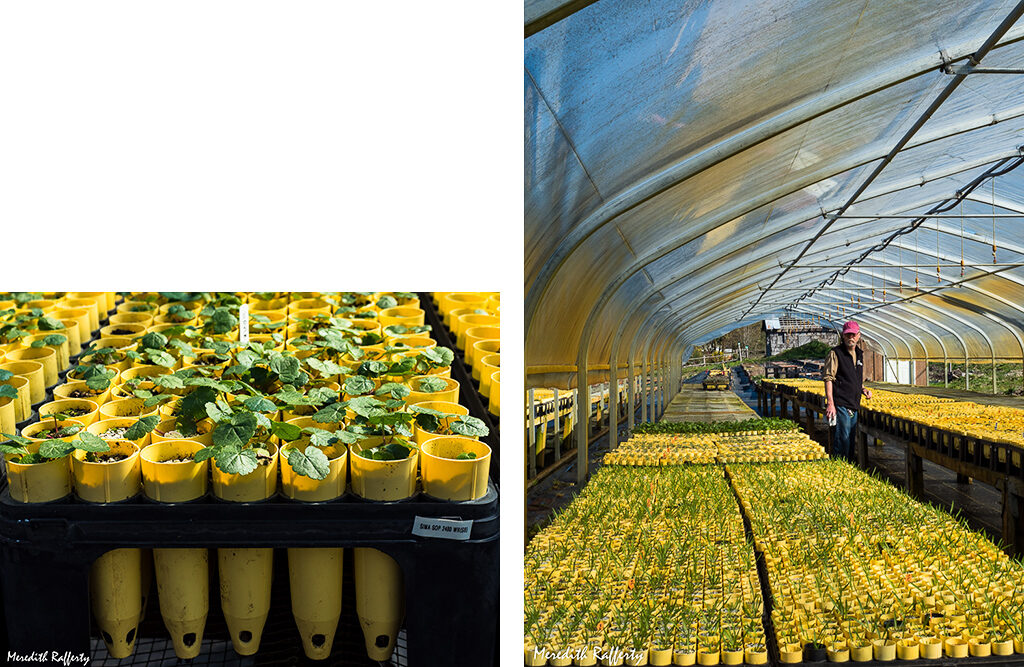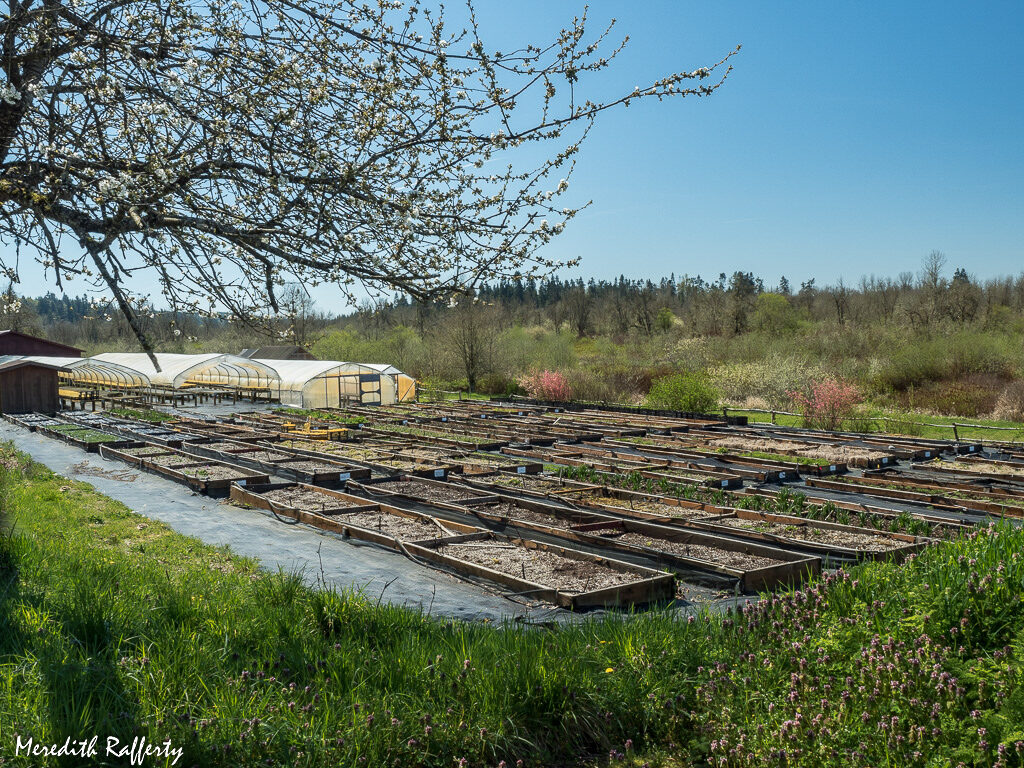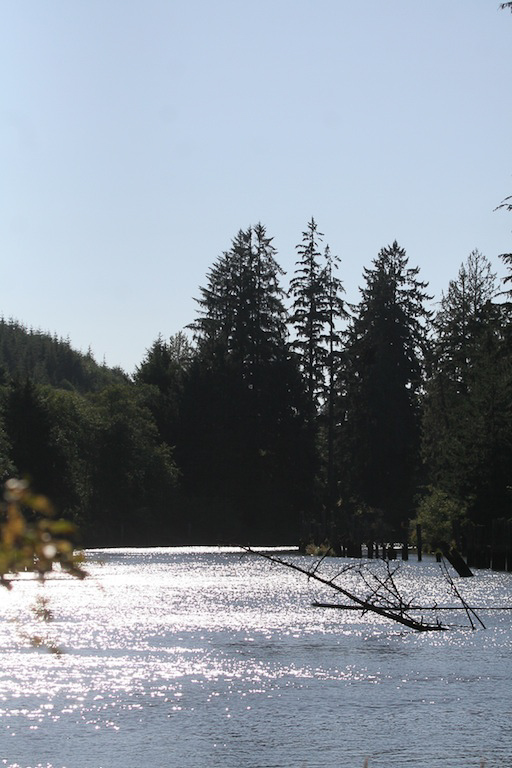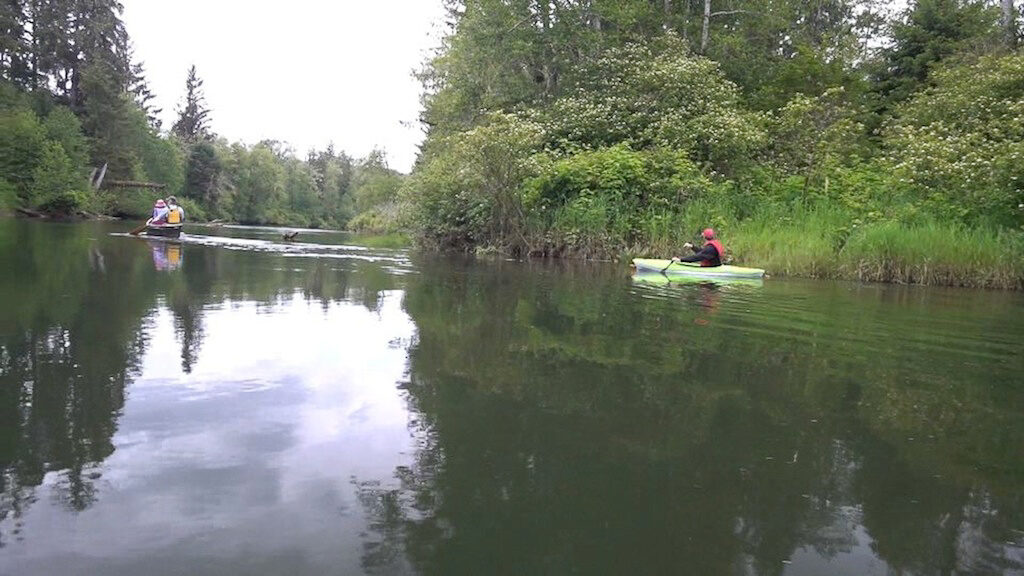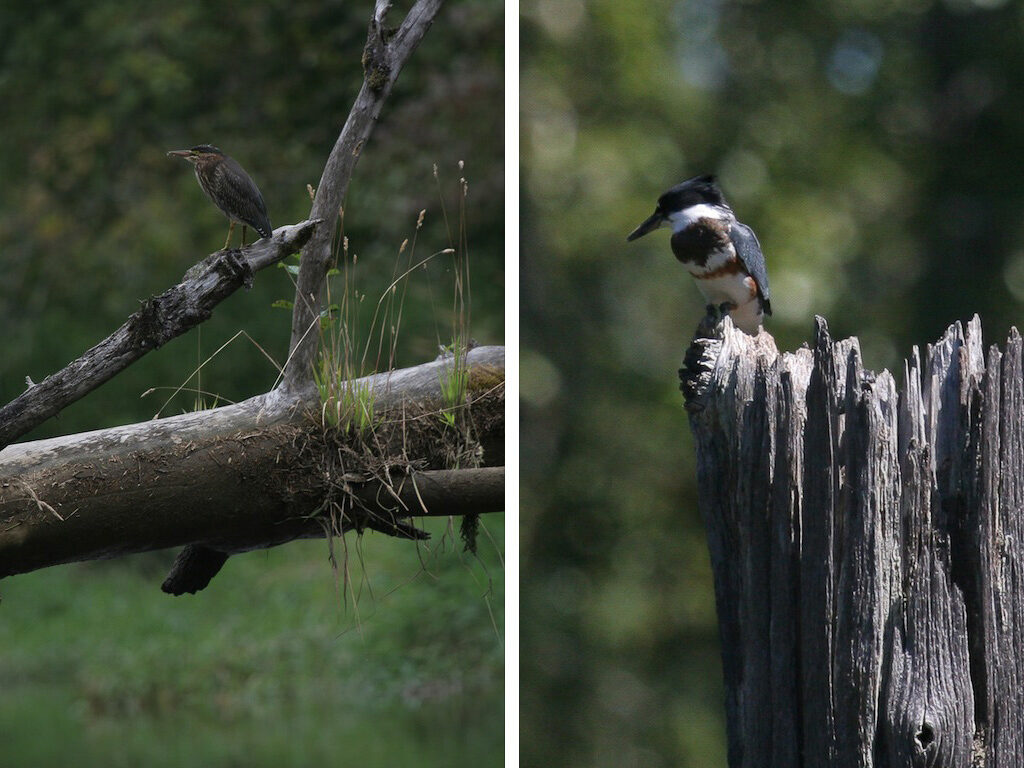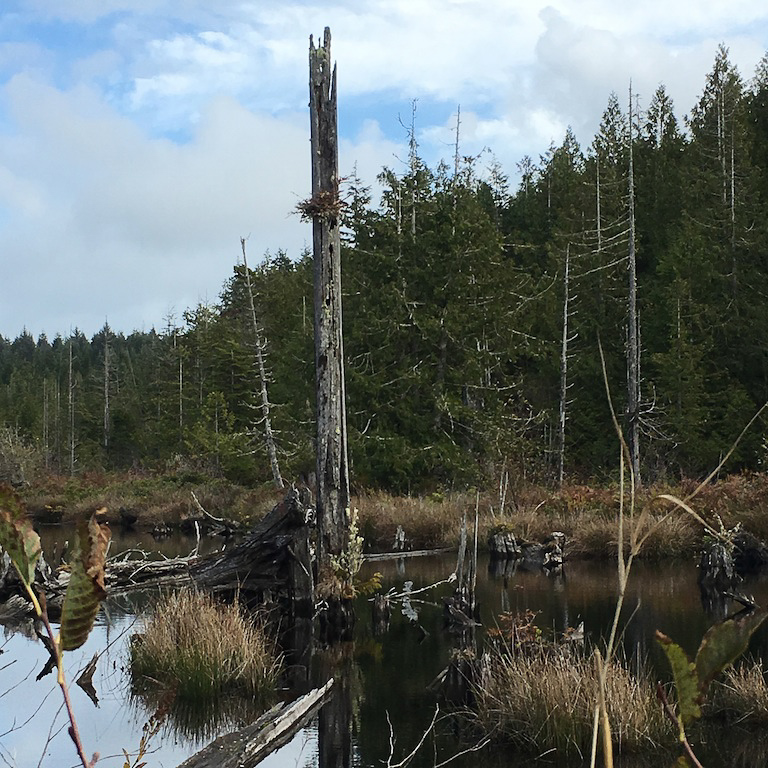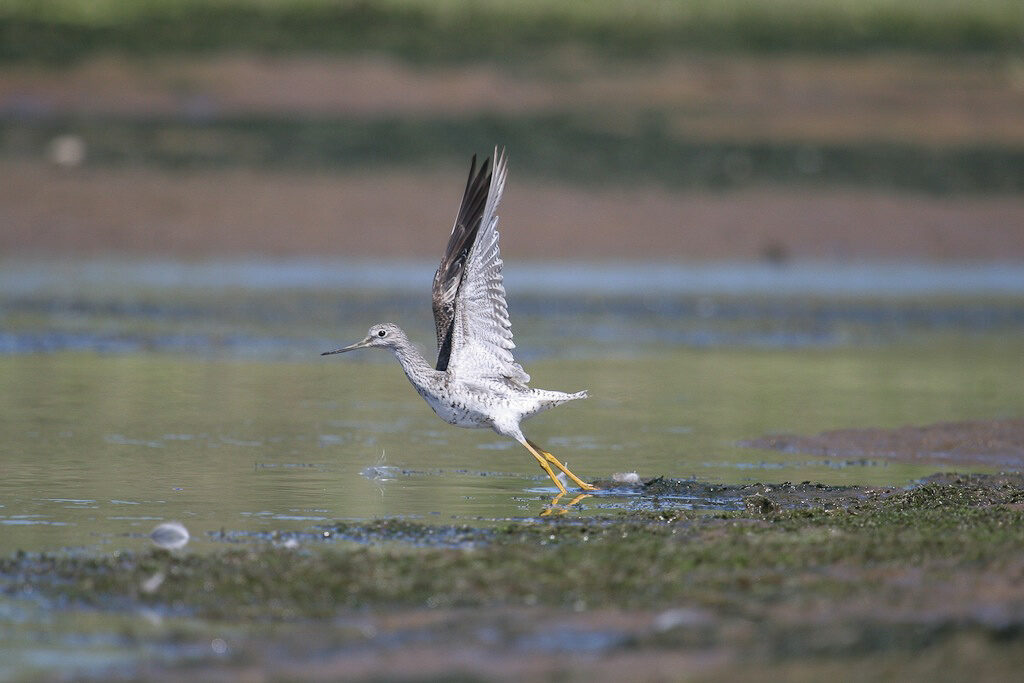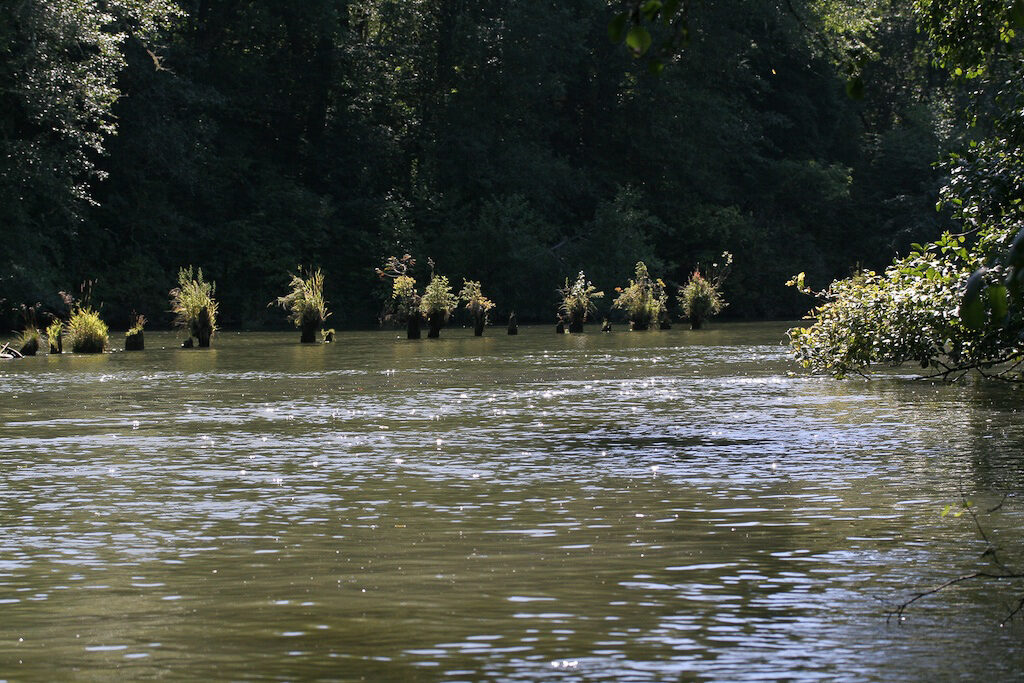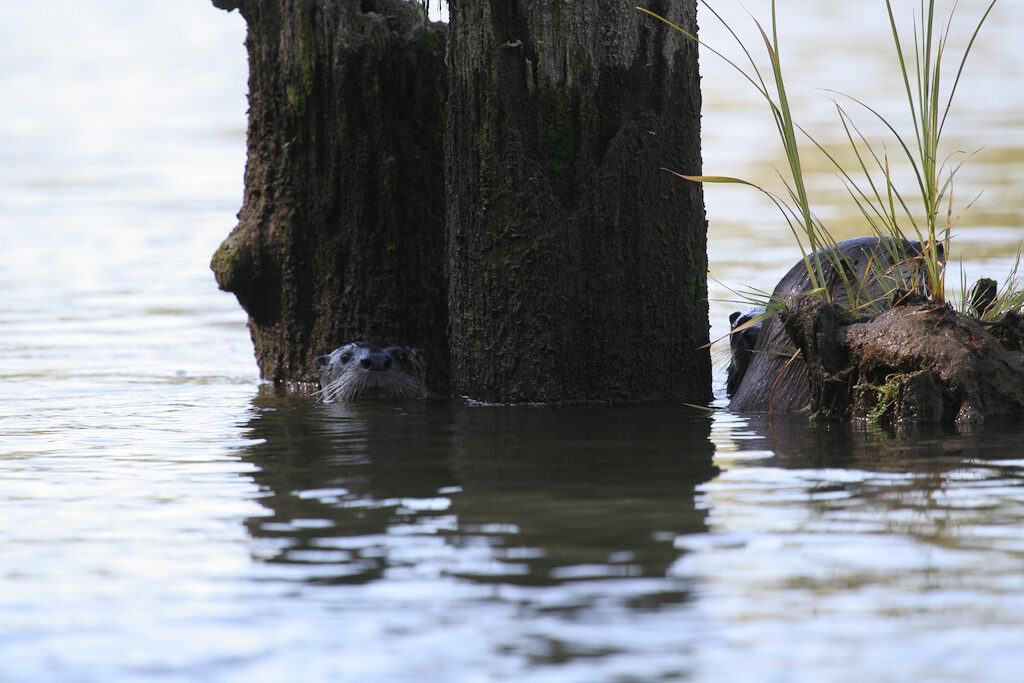Hiding in Plain Sight, Invasive Weeds in Prairie Habitats, Post by Casey Risley, photos as indicated.
Casey Risley is a lover of moss, mud, rain, and all things Pacific Northwest. After leaving Washington to pursue a Master’s in Fish & Wildlife Ecology from the University of Maine, she affirmed her love of her home state and has worked in biological sciences and natural resources since 2004. She currently works for Lewis County Noxious Weed Control, focusing on outreach and education.
Hiding in Plain Sight, Invasive Weeds in Prairie Habitats
Much like the weeds we wage war upon, Lewis County Noxious Weed Control lies dormant in the winter months. We wait and we long for the warmth of spring to signal to us that it is again time to don the orange vests, work gloves, and hiking boots; and return to the outdoors to seek out and destroy the noxious weeds that threaten our wild spaces. Prairies and native grasslands are unique, not only in their beauty and their power to evoke wanderlust, but also in the challenges that they pose in invasive and noxious weed prevention, detection, and treatment.
Many exotic species are so common and widespread that we tend to think of them as belonging. We expect prairies to be full of grasses and splendid colors of wildflowers. Rarely does the eye pick out that one purple flower that does not fit in, or that one grass that doesn’t belong. Some plants, like foxglove (Digitalis purpurea), are not native, but they are widely distributed and we’re accustomed to seeing them. Their tall stalks of purple flowers complement the other wildflowers, and luckily, they are relatively benign. Other nonnatives, however, do not play as nicely.
In a prairie habitat, noxious weeds can often go unnoticed for multiple years, because of the ease with which they blend in. By the time that new populations are identified, multiple plants are well established and a healthy seed bank is already set in the soil. An established noxious weed population can take multiple years of repeated treatments for successful eradication. Sometimes, however, the population is too large, and eradication is no longer feasible. The best control measure then becomes containment, to prevent the population from spreading.

Meadow of orange hawkweed and wild carrot. Courtesy of WSNWCB
The good news in all this is that one way you can help out in the war against noxious weeds is to dally in the wildflowers a little longer. Not all wildflowers belong, and there are a few that are really easy to identify if you know what to look for.
Orange hawkweed (Hieracium aurantiacum) looks like an orange dandelion, but dandelions aren’t supposed to be orange! Also misidentified as Indian paintbrush because of its orange and red coloring, orange hawkweed is a Class B Noxious Weed, noted for its aggressive behavior in pastures, rangelands, and meadows. Once established, the unpalatable orange hawkweed will outcompete valuable forage for grazers.
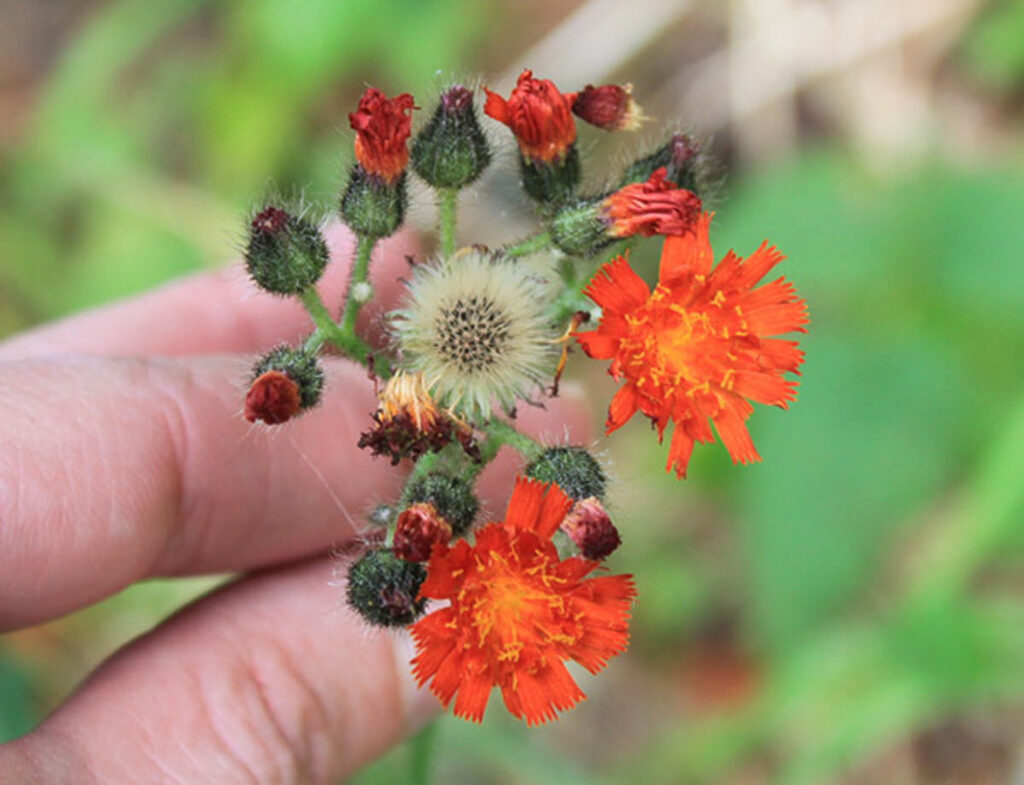
Orange hawkweed, often overlooked and misidentified as Indian paint brush, or orange dandelion. Courtesy of WSNWCB
Sulfur cinquefoil (Potentilla recta) is often misidentified as wild strawberry or even buttercup due to its pale yellow, 5 petal flowers. However, sulfur cinquefoil is a Class B noxious weed and is a strong competitor with native grasses that will form dense monocultures. It has a high tannin content, making it unpalatable to grazing wildlife and livestock. The leaves are distinct, in that they are palmate, rough and hairy, with toothed margins. The leaves will often be folded up toward the stem, rather than lying flat.
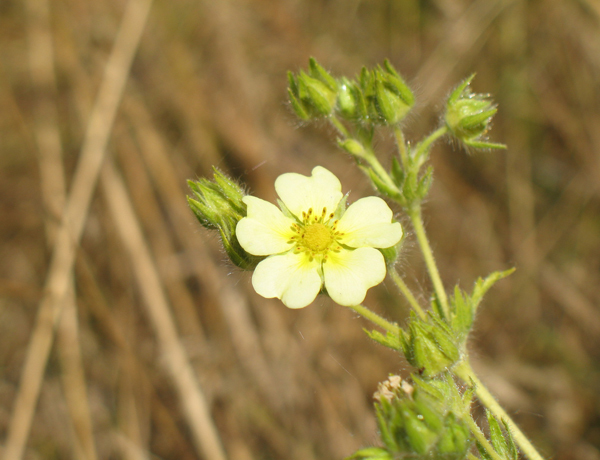
Figure 3a
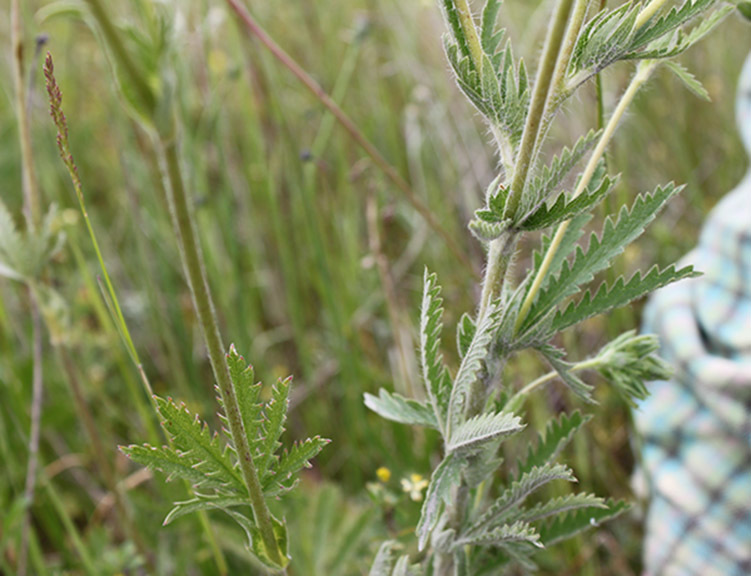
Figures 3a & 3b. Sulfur cinquefoil has a simple, creamy yellow, 5 petal flower with hairy palmate leaves that fold up toward the stem. This noxious weed species is often mistaken as a wild strawberry, or buttercup. Courtesy of WSNWCB
There are no native snapdragons in the Pacific Northwest. Should you spot yellow snapdragons in a prairie, grassland, or field you’ve most likely stumbled across Dalmatian toadflax (Linaria dalmatica ssp. Dalmatica) or yellow toadflax (Linaria vulgaris), both Class B noxious weeds in Washington. The toadflax species are a little happier growing east of the Cascades, but they are known to occur on the west side as well, and they are difficult to control once established. The characteristic snapdragon flower is the most identifiable feature of this weed. As with the other noxious weeds mentioned, the toadflaxes will form dense monocultures, diminishing available forage in prairies and grasslands.
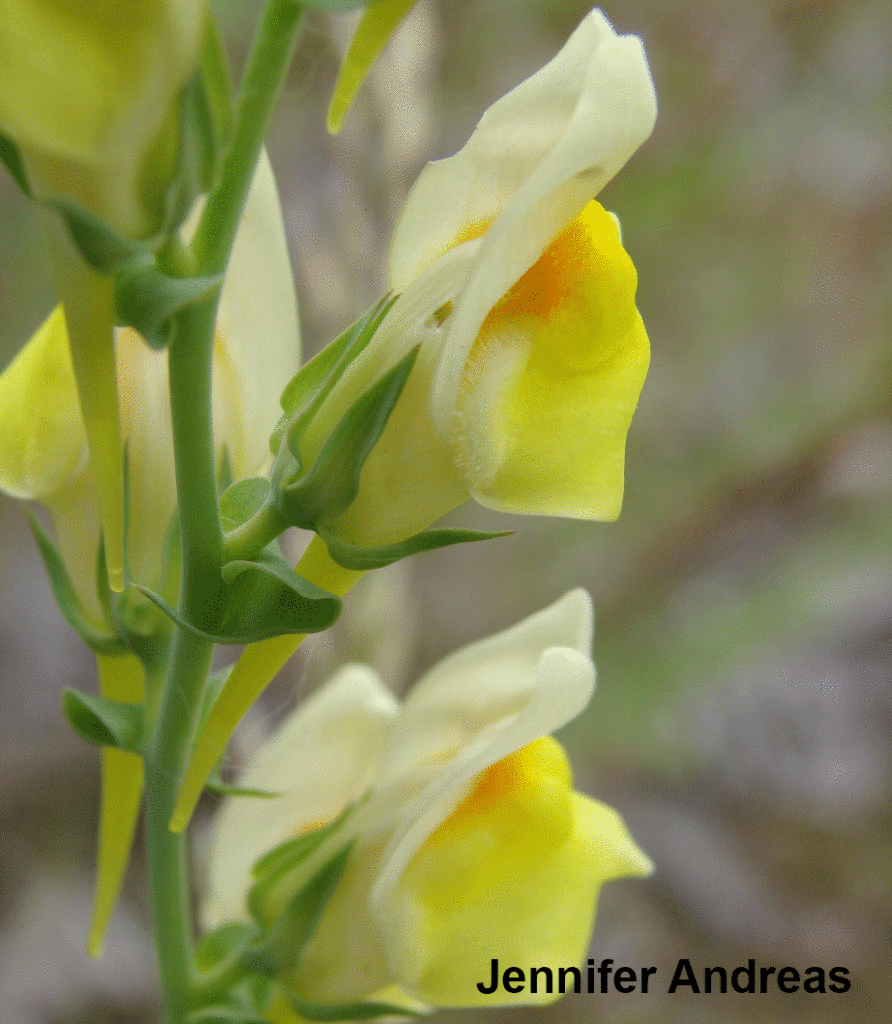
Figure 4a, Dalmatian Toadflax
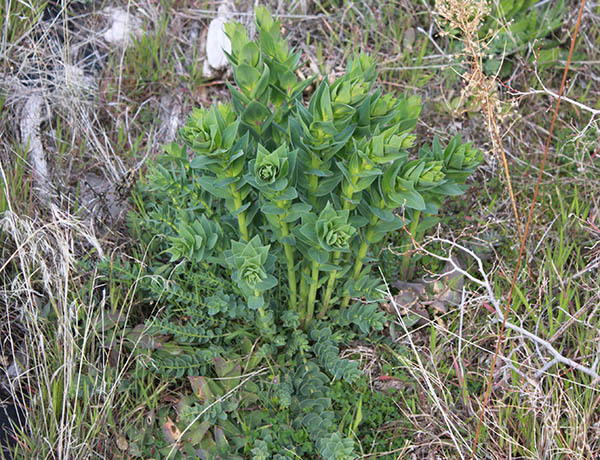
Figures 4a & 4b. No snapdragon species are native to the PNW. Dalmatian toadflax and Yellow toadflax are both noxious weeds in Washington State. Courtesy of WSNWCB
False brome (Brachypodium sylvaticum) is a Class A noxious weed in Washington and is one of the more difficult species to identify in the field because it look like a “grass”. False brome is not yet widely documented in Washington State, but because of its cryptic appearance, there is significant threat of this invasive becoming wide spread. It is a perennial, loosely tufted looking grass with upright stems. Soft long hairs are present and noticeable on the leaves. The flowers will droop or nod in a characteristic manner. Plants often have a distinctive lime-green coloration that persists much of the year.
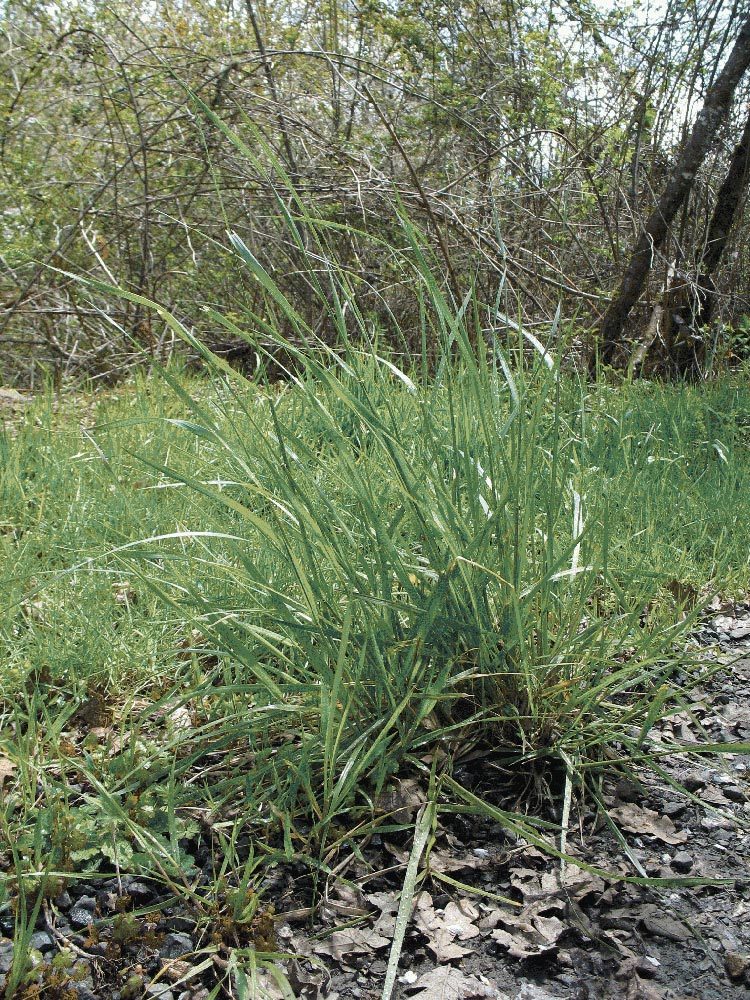
Figure 5a, False Brome
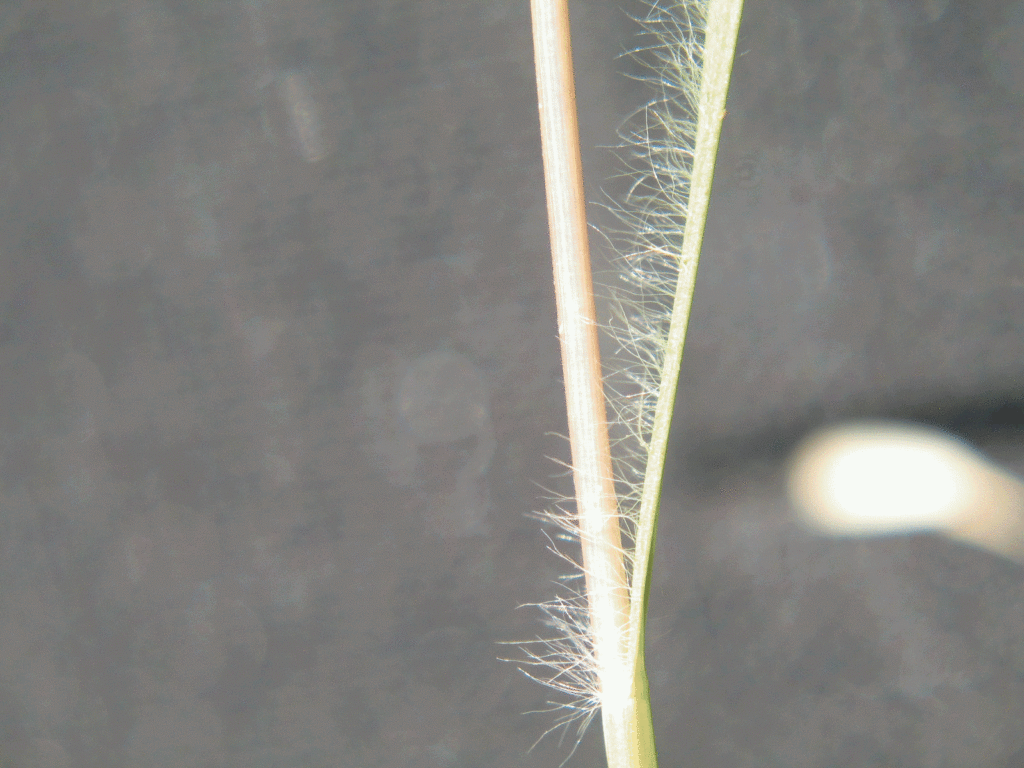
Figures 5a &5b. False brome is more difficult to identify. Note the soft and long hairs on the stem and leaf, and the general droopy appearance of the grass species. Courtesy of WSNWCB
Of course, there are many more potential noxious weed invaders that you might encounter while on your adventure. Our office has had some positive experience using the iNaturalist app for help in making identifications. All County Noxious Weed Boards/Districts are also happy to assist in weed identification. Our offices can, and often do, ID live or dried specimens, however, high quality photographs are our preference. We would rather not have native or endemic plants damaged or removed by accident.

Figure 6. iNaturalist app for help in identifying weed species in the field
If you’ve positively identified a noxious or invasive species (plant, insect, or any other invasive) you can contact your County Noxious Weed Control Board, or you can report the sighting directly to Washington Invasive Species Council using their free WA Invasives app, and the information will be routed to the appropriate governmental agency.
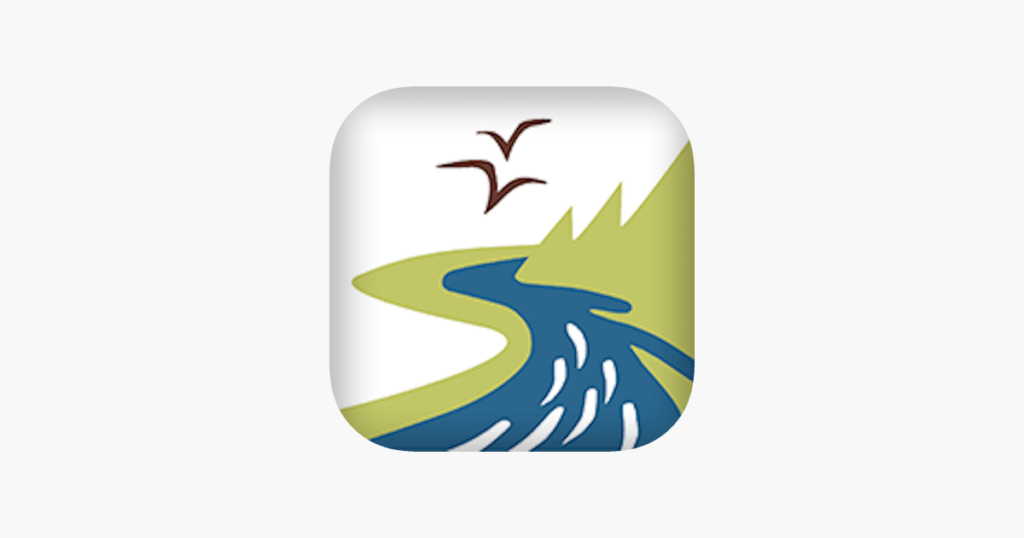
Figure 7. WA Invasives app enables the user to report sightings of invasive species in Washington State.
How these noxious weed species are transported is also of concern. As ecotourism increases in the Pacific Northwest, invasive species are being transported at increasingly high rates by hikers, boaters, birders, bikers, campers, and even weed control crews themselves. Seeds of invasive plants species are easily spread by being trapped in the treads of boots, loosely attached to clothing, or caught in your four legged companion’s fur. Brush your boots, clothing, and pup’s fur free of any seeds BEFORE as well as AFTER each outdoor activity to keep the seeds from being moved from one outdoor space to another. Recreational gear such as bike tire treads, boat propellers and trailers, tents, and kayaks should also be inspected and cleaned of any debris before and after each use. Firewood should be sourced locally. Hay and grass feed for horses should be certified weed free. Washington State and County offices are partners in the Play.Clean.Go. Campaign, whose mission is to promote advocacy, awareness, and partnership with environmentalists and recreationalists to prevent the spread of invasive species.

Figure 8. Weed seed can hitch a ride in boot treads or on your pup’s fur. Be sure to clean your boots, clothing, gear, and pup’s fur BEFORE as well as AFTER recreating to prevent spreading invasive species. Courtesy of Play.Clean.Go.
For more information about noxious weeds in Washington State, please visit Washington State Noxious Weed Control Board at https://www.nwcb.wa.gov/
Lewis County Noxious Weed Control can be contacted via https://lewiscountywa.gov/departments/weed-control/
Washington Invasive Species Council and to download the WA Invasives app https://invasivespecies.wa.gov/
To learn more about the Play.Clean.Go. Campaign or to join as a partner, visit https://www.playcleango.org/help-stop-invasive-species-with-playcleango
